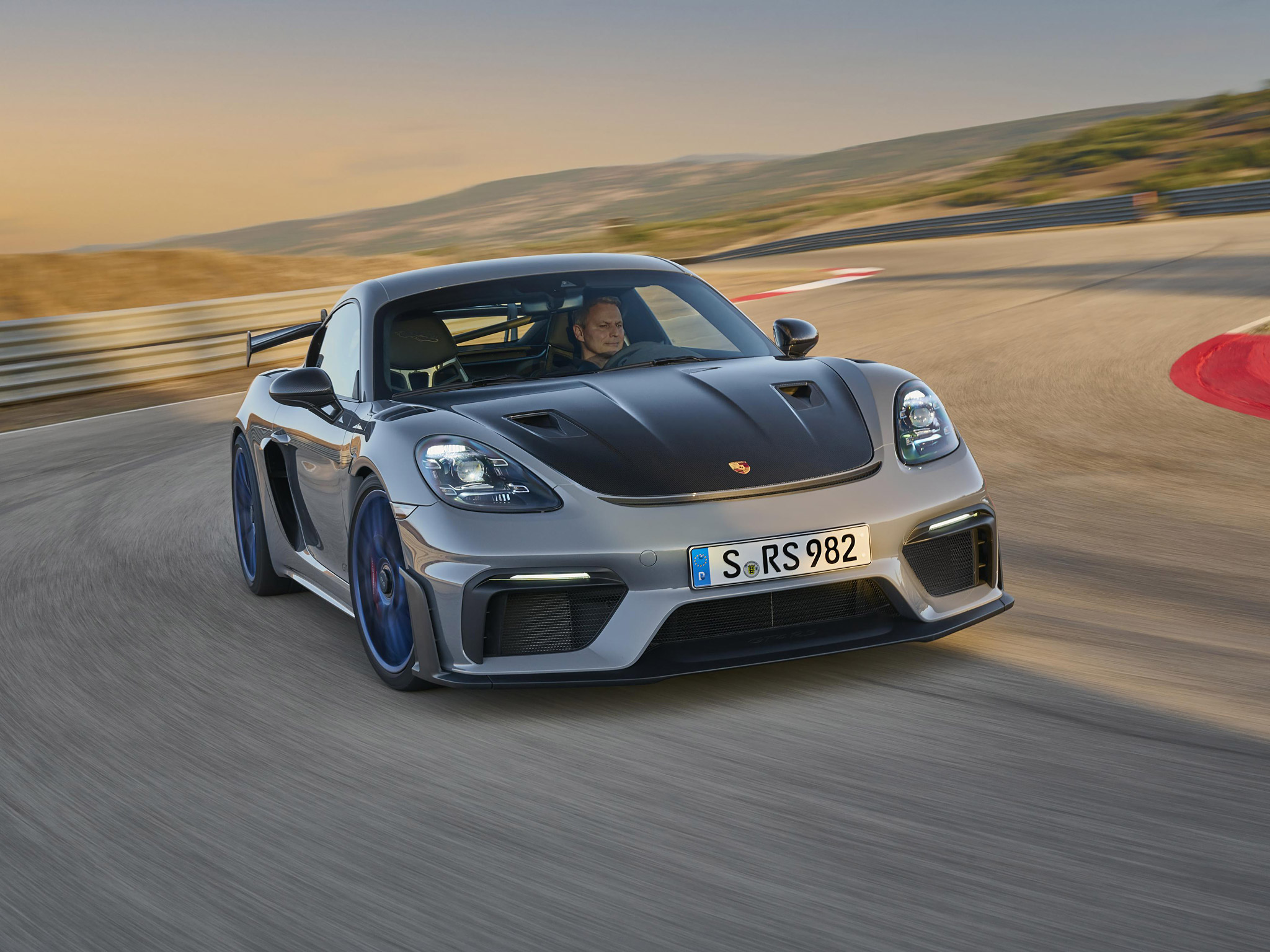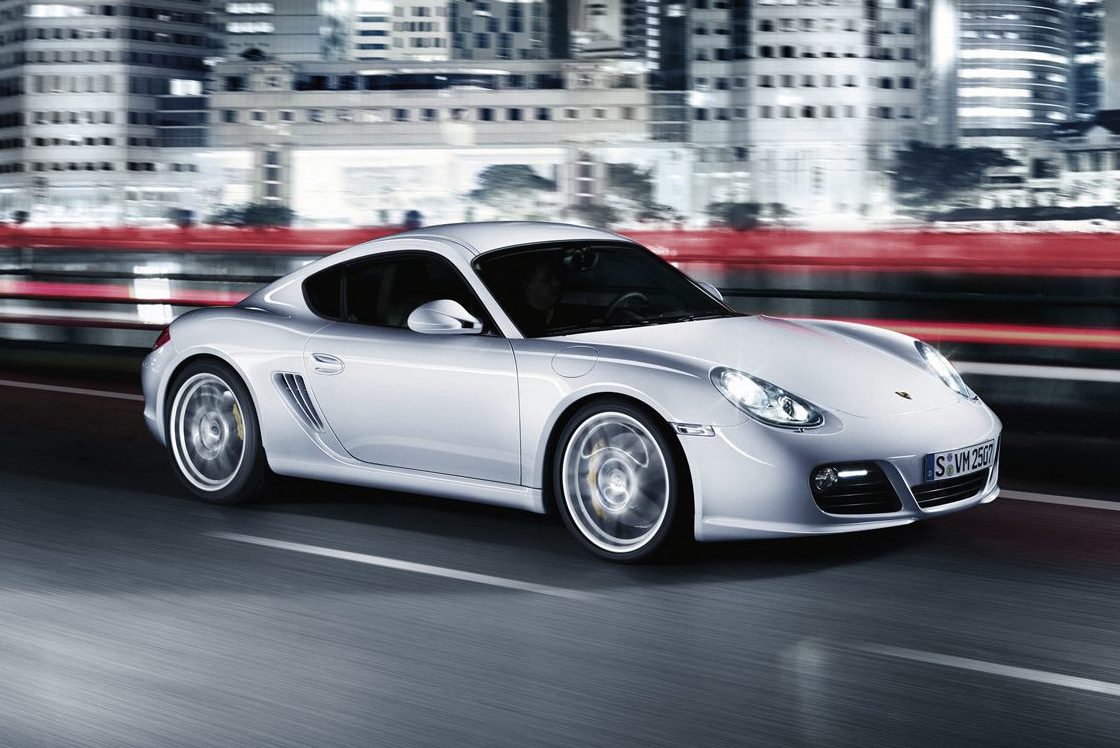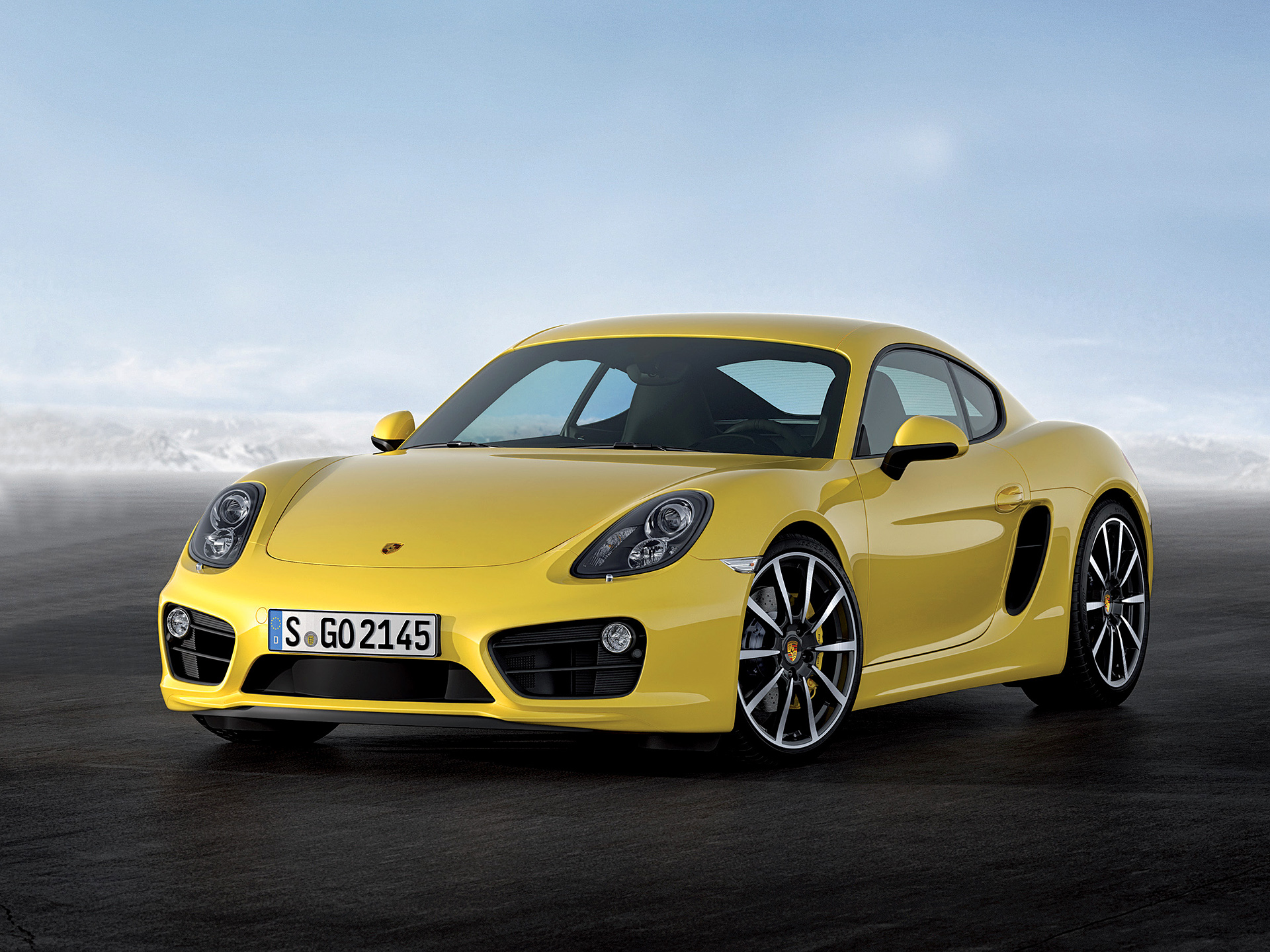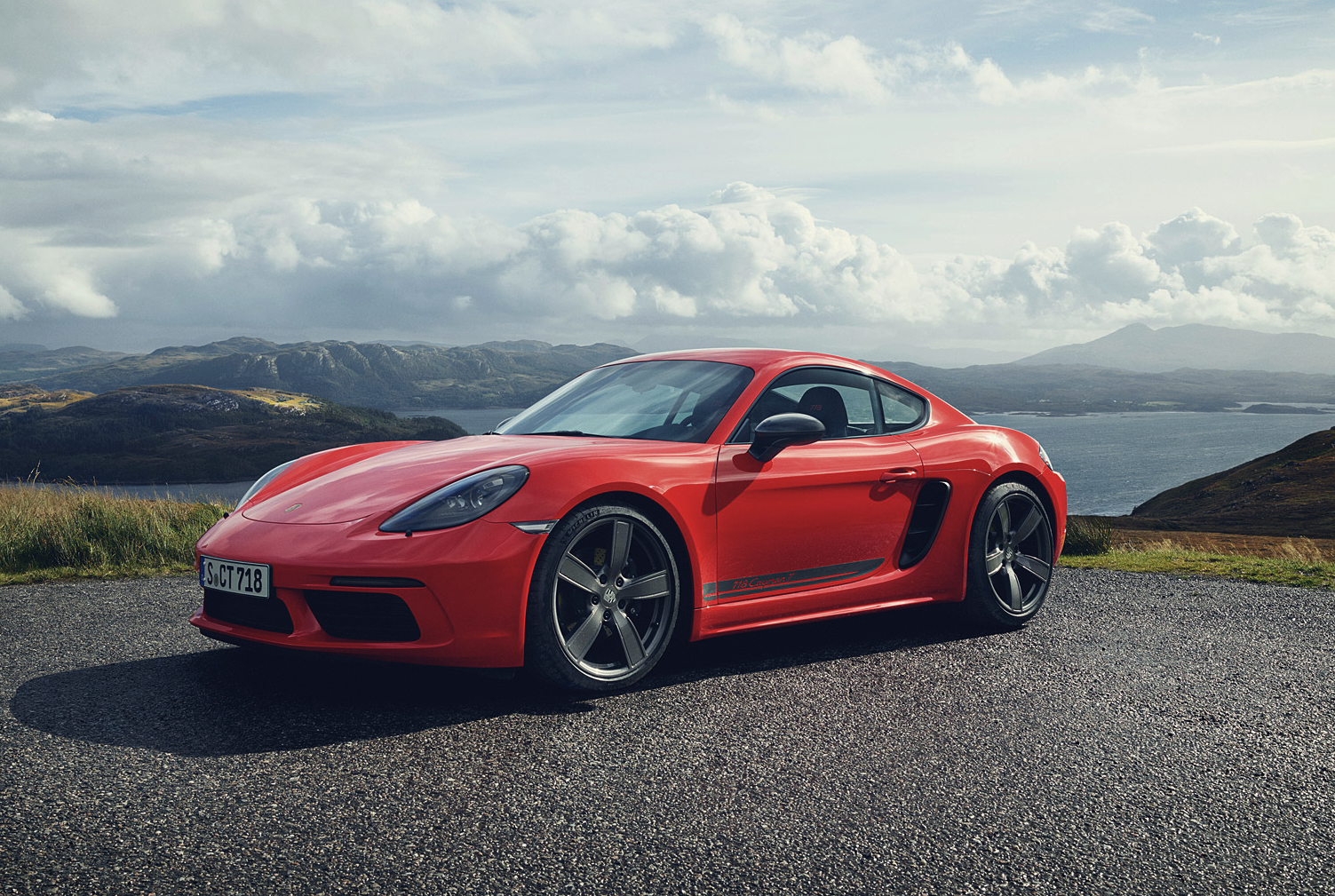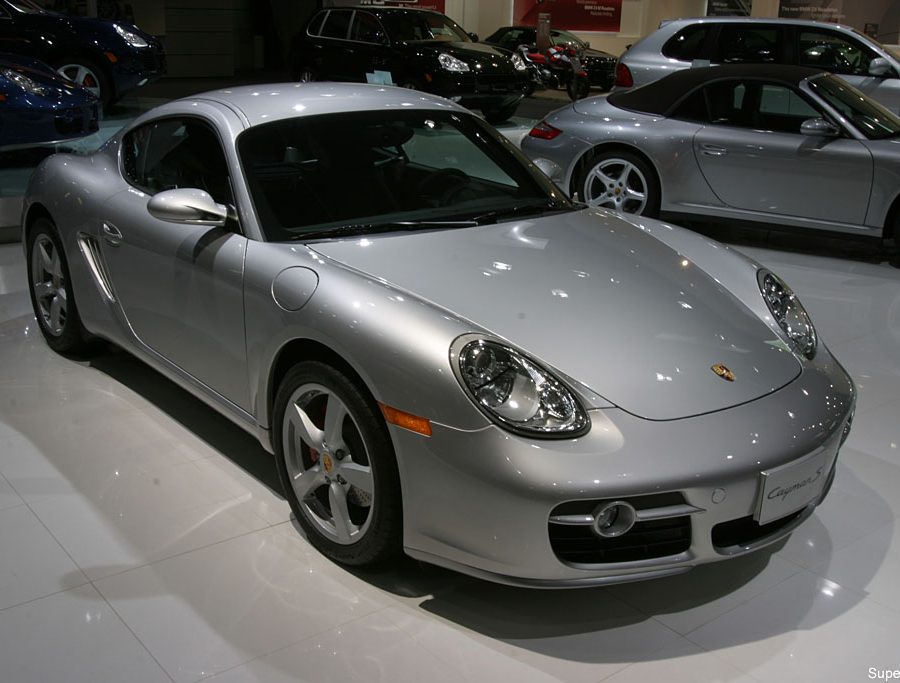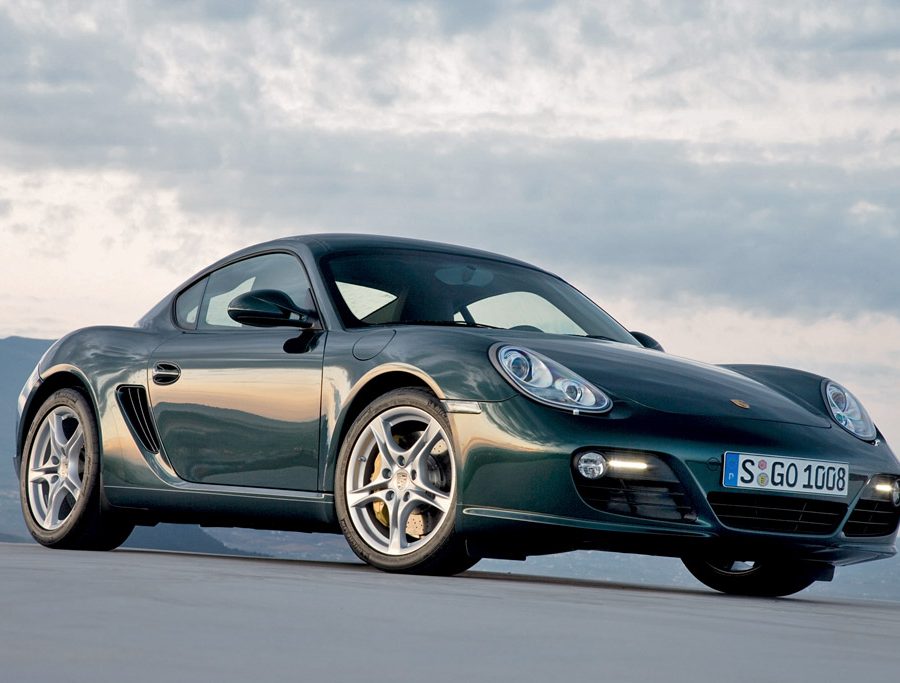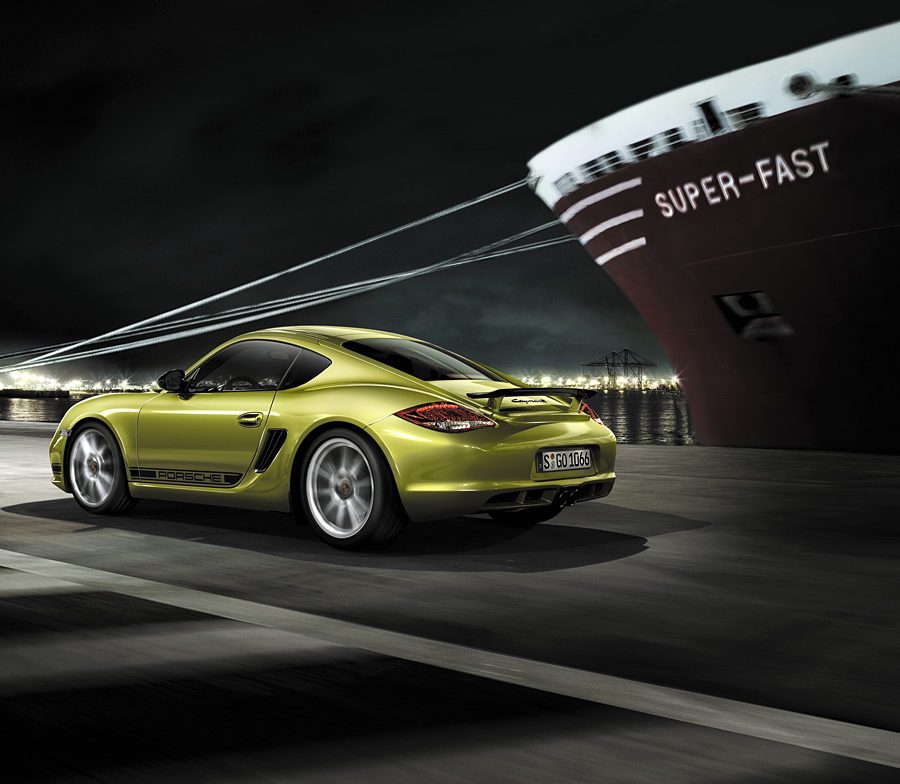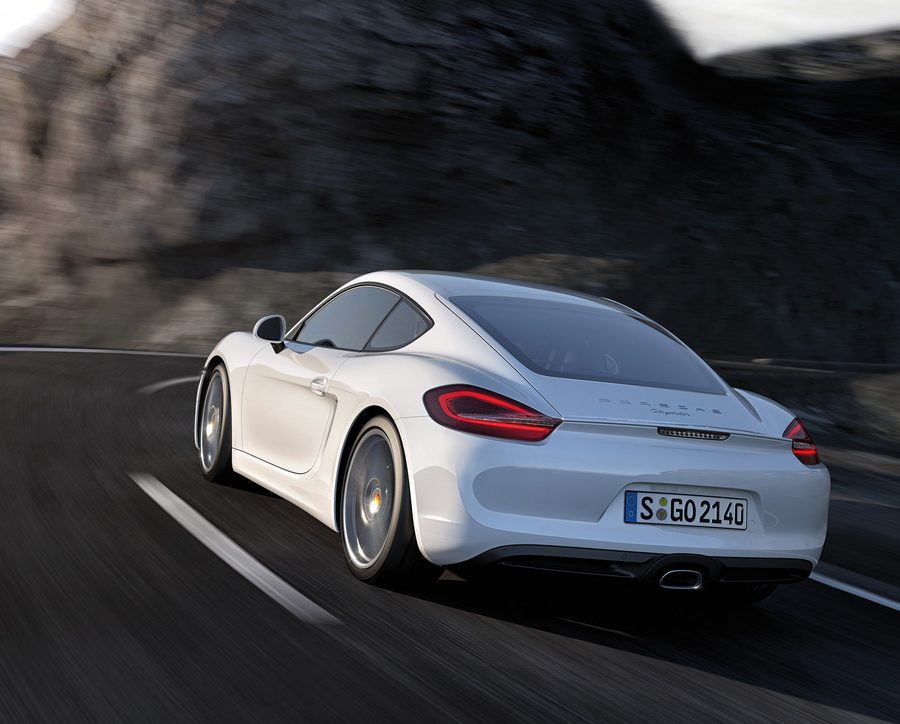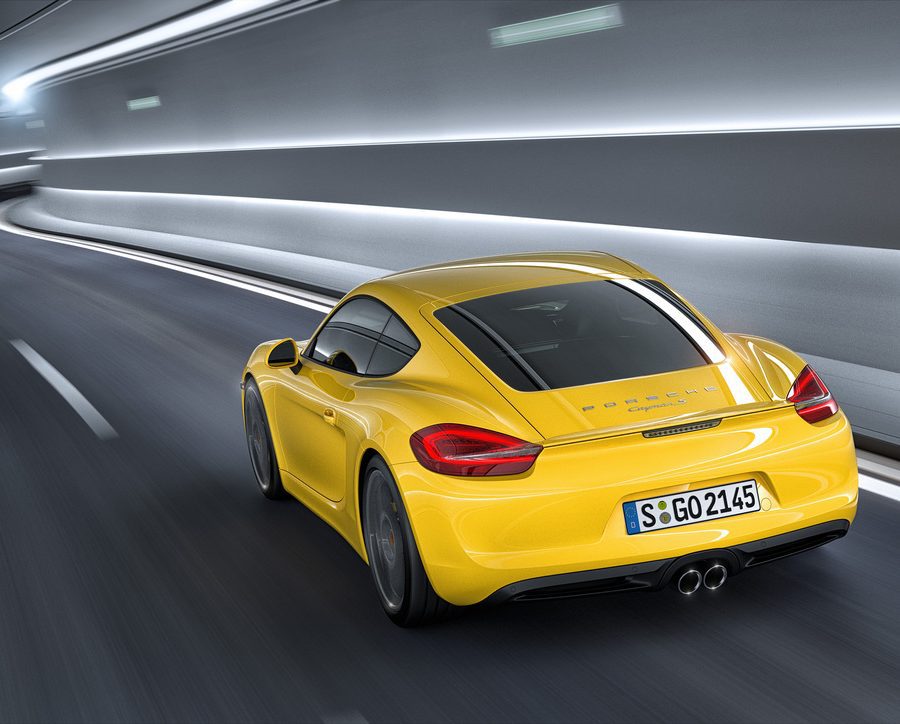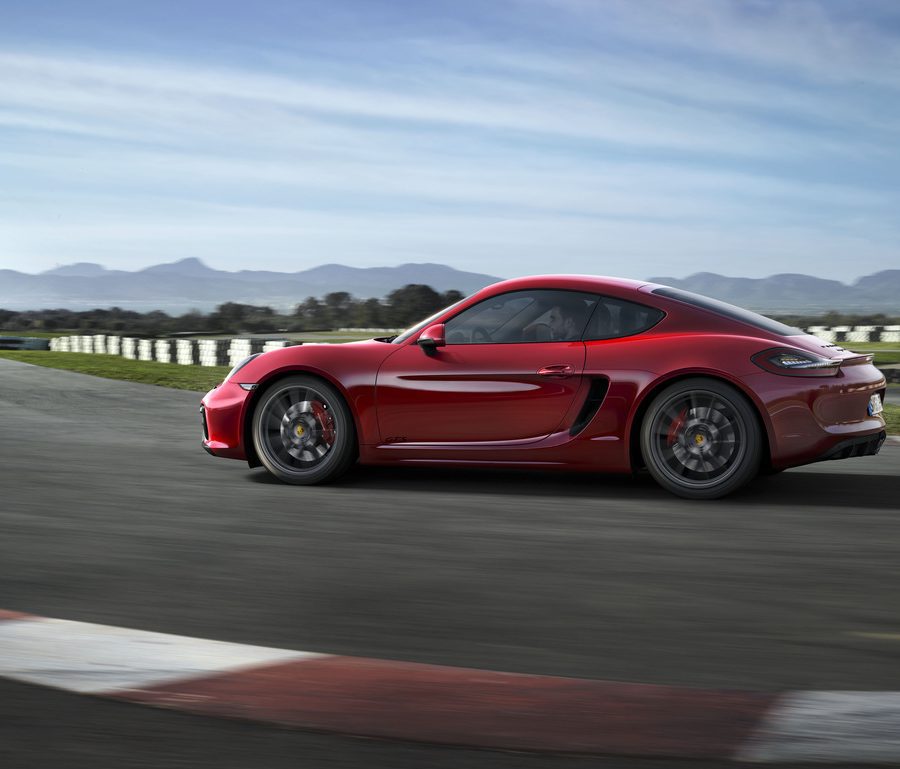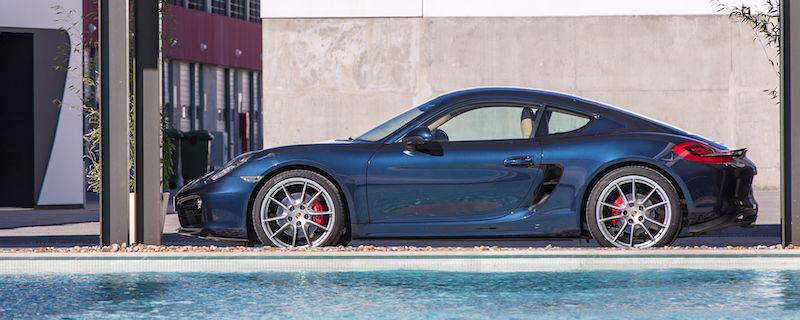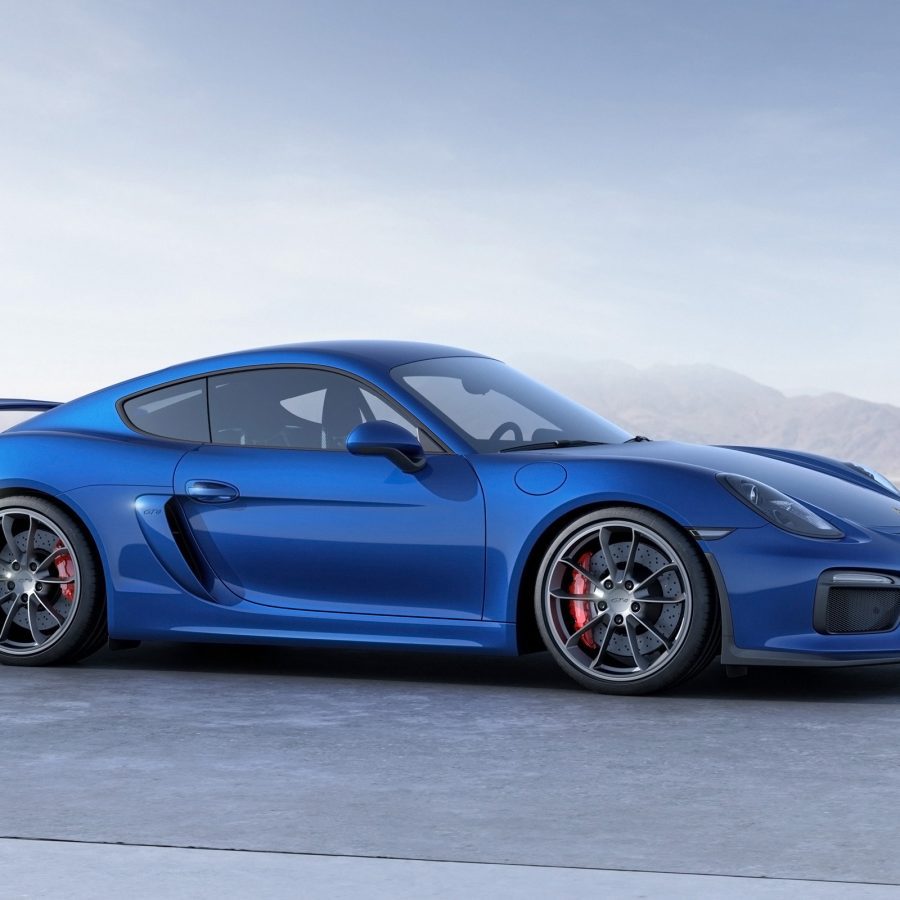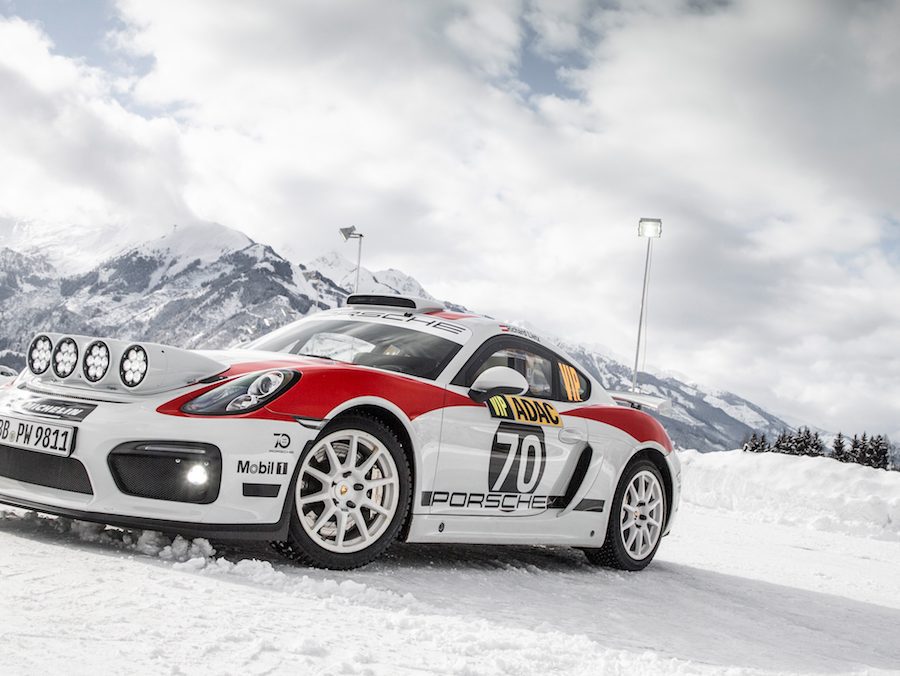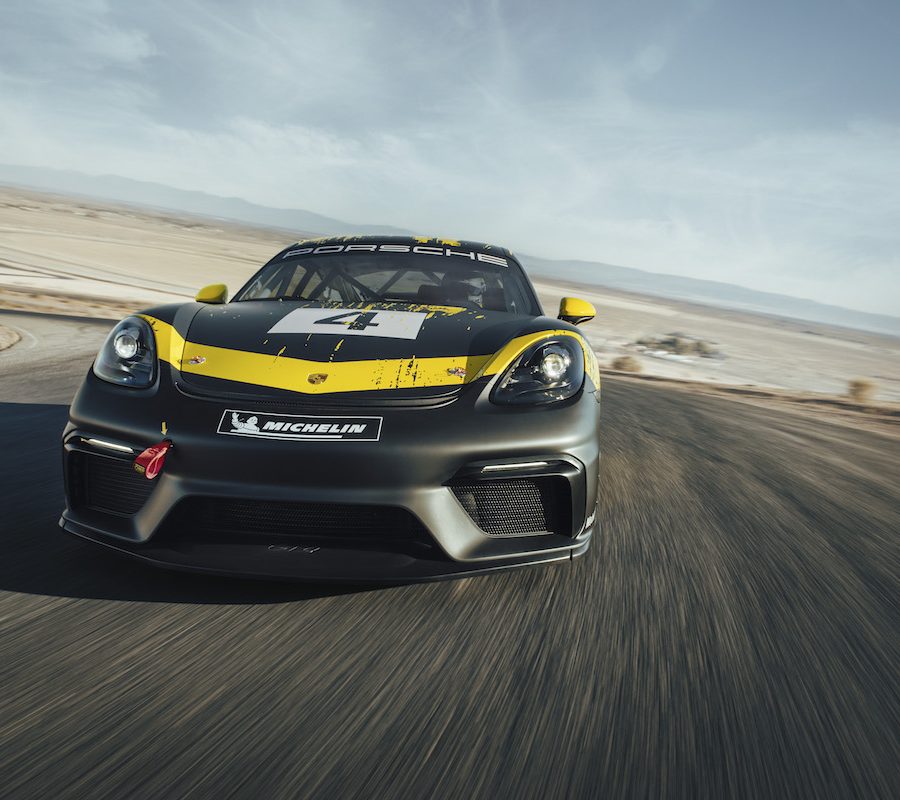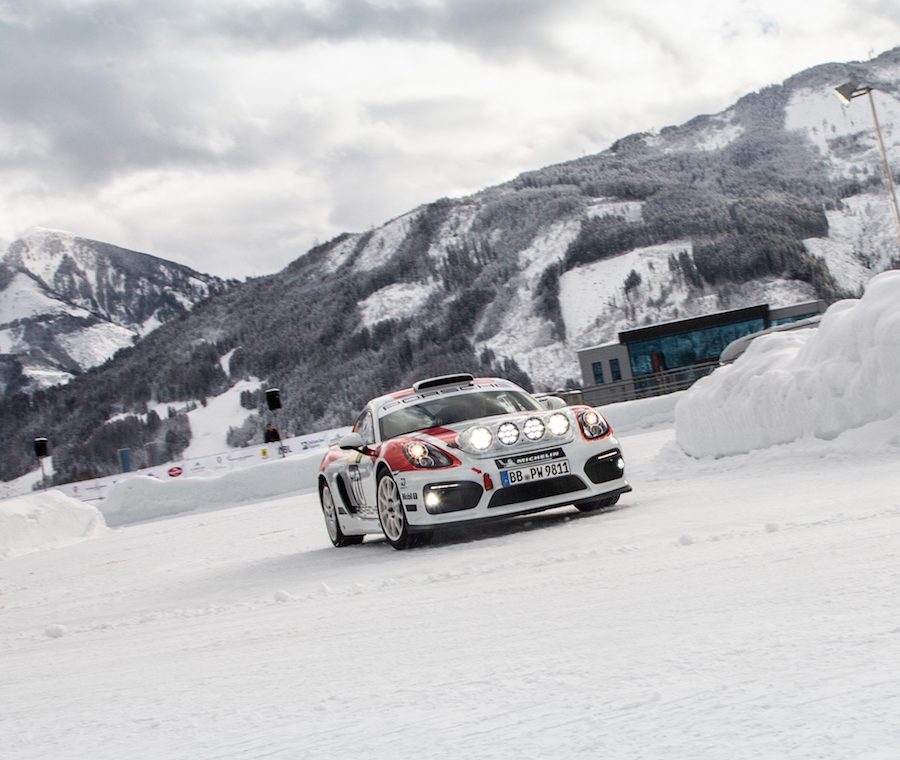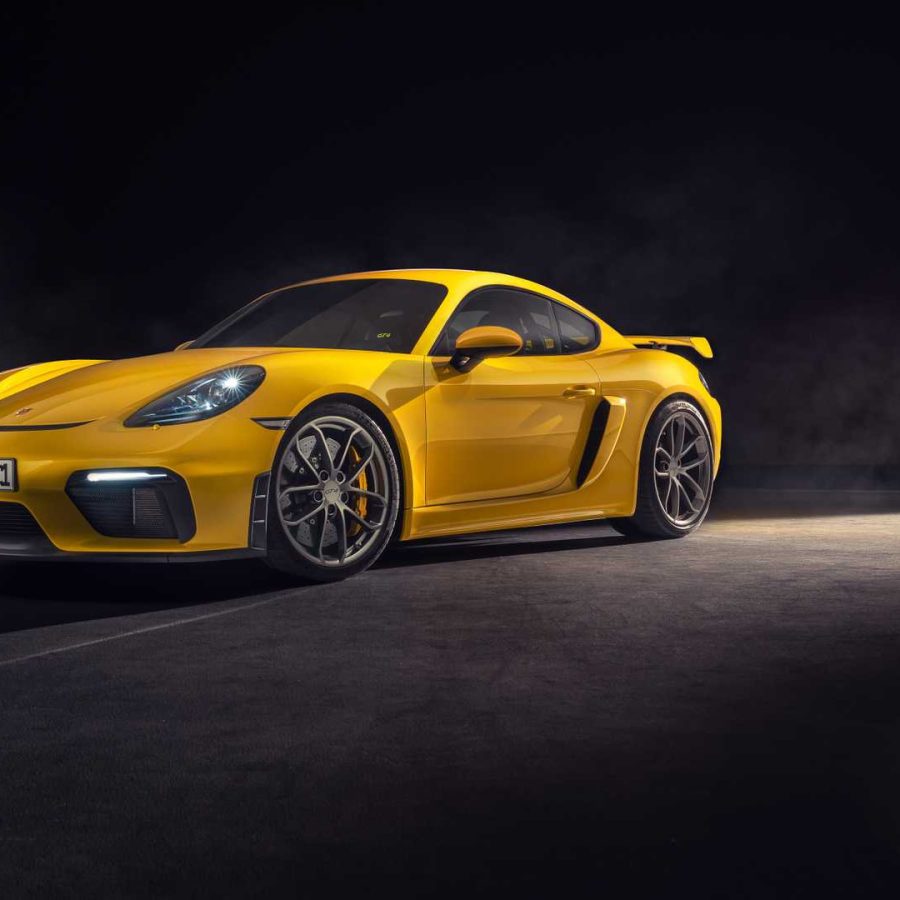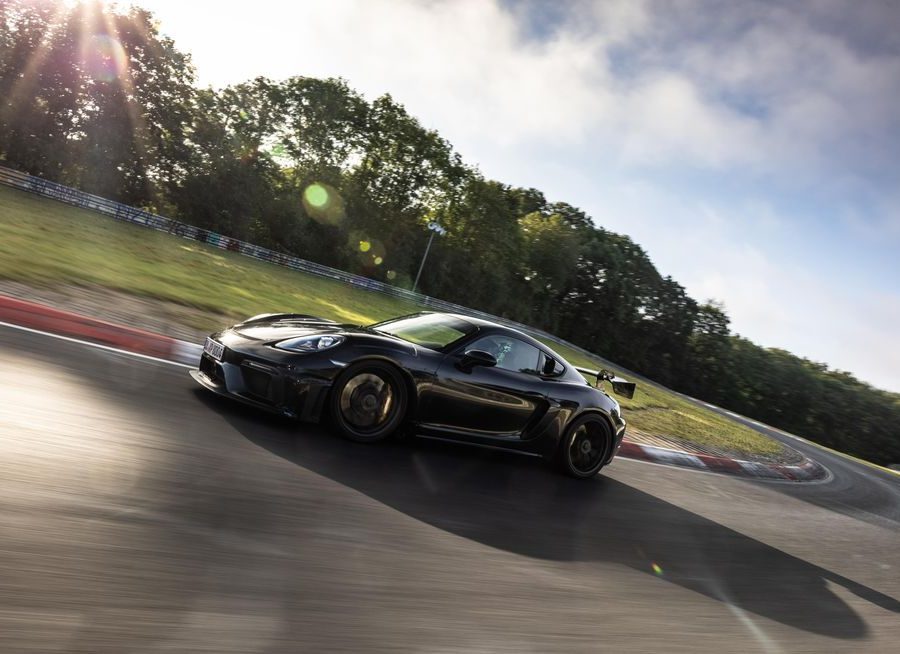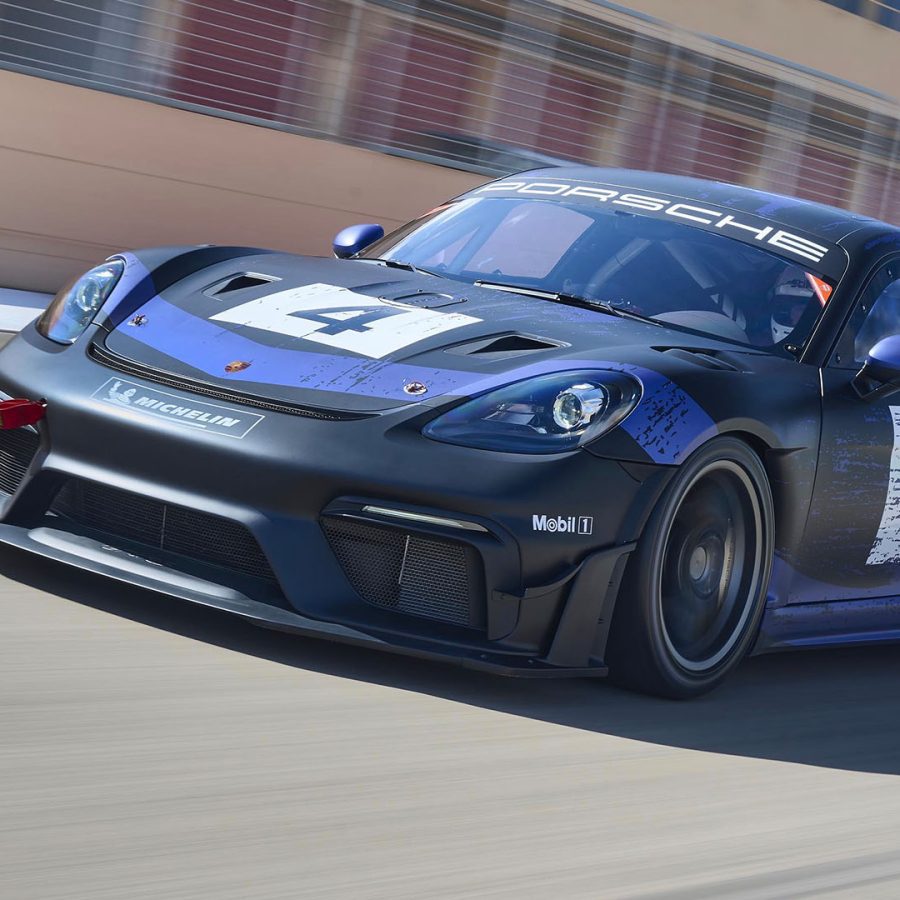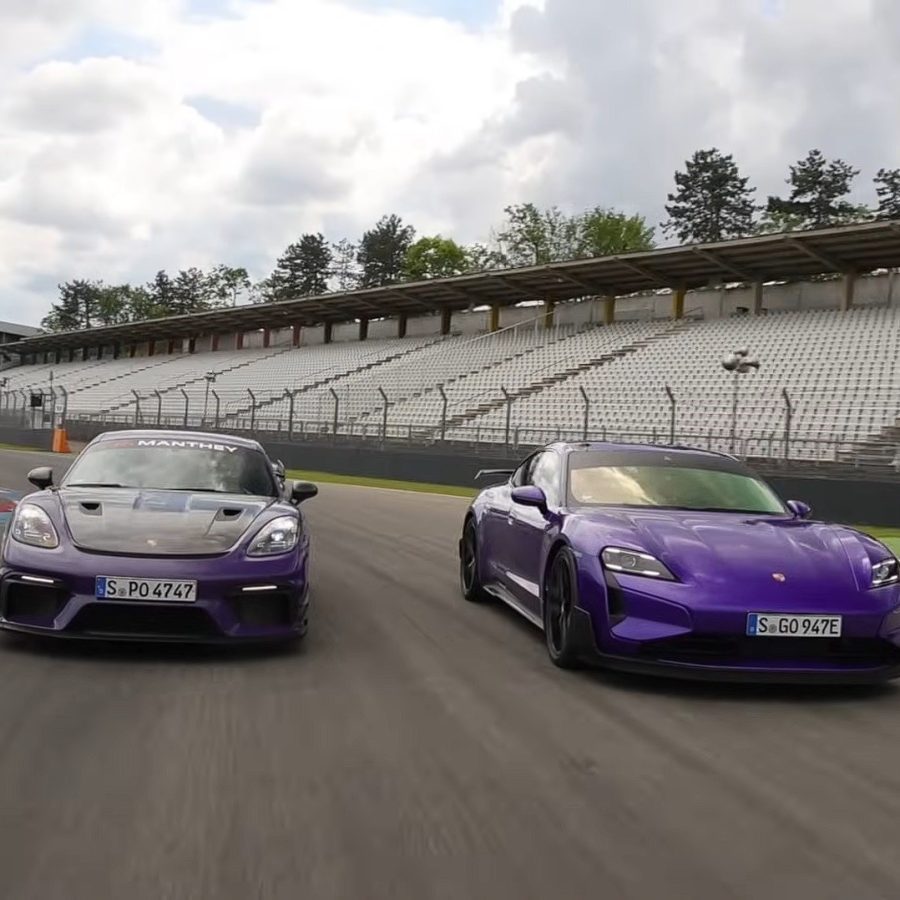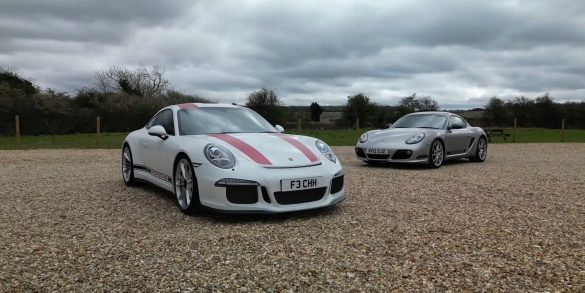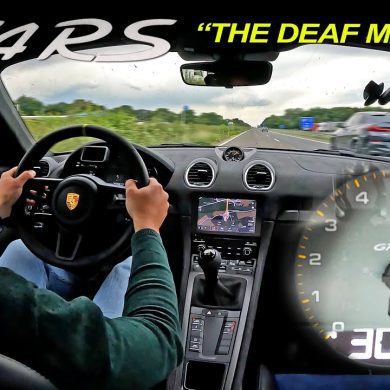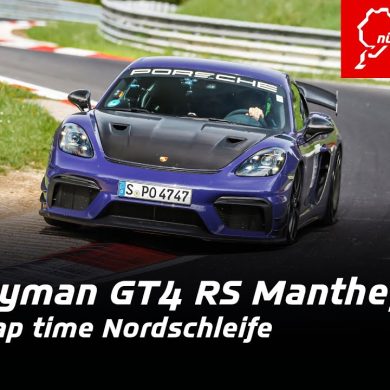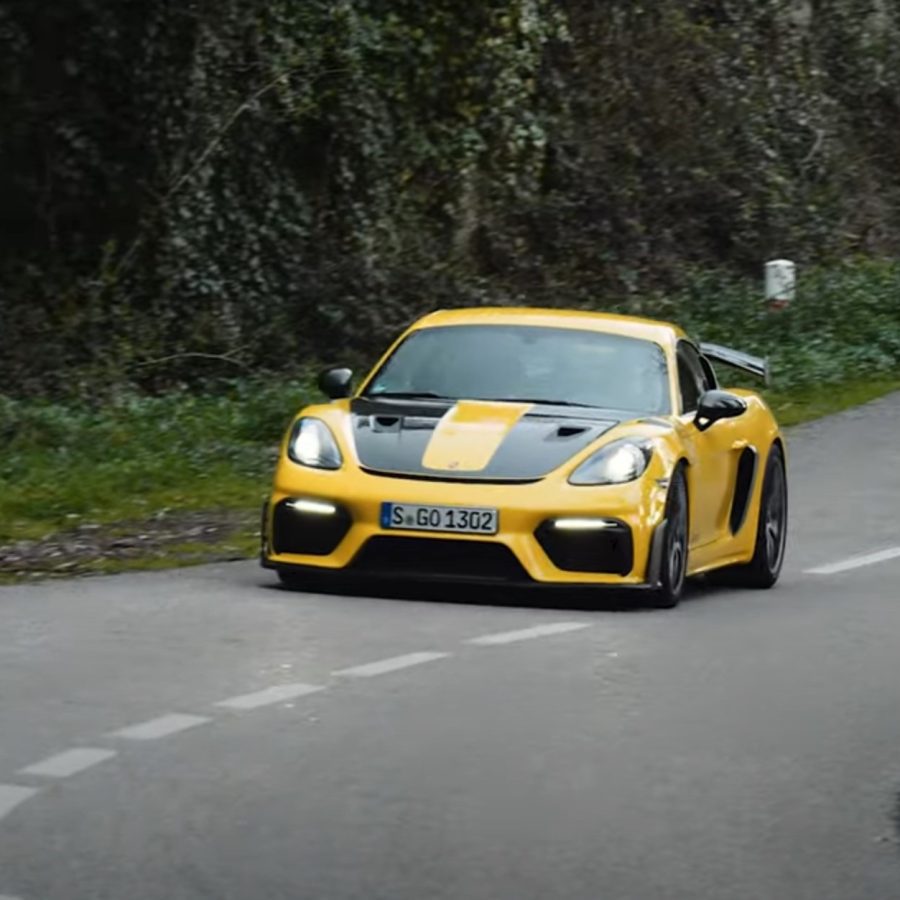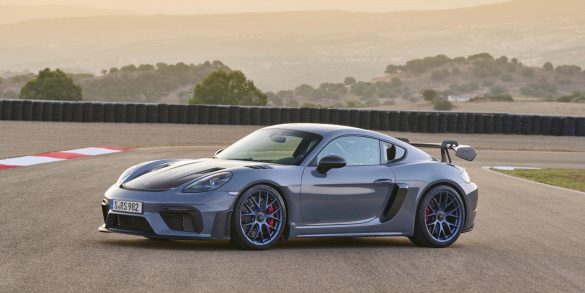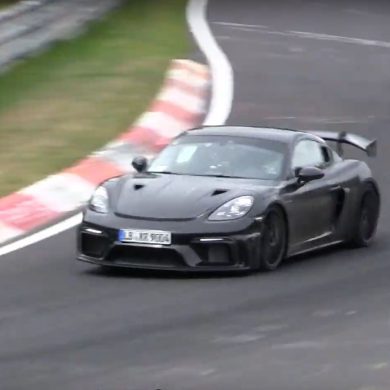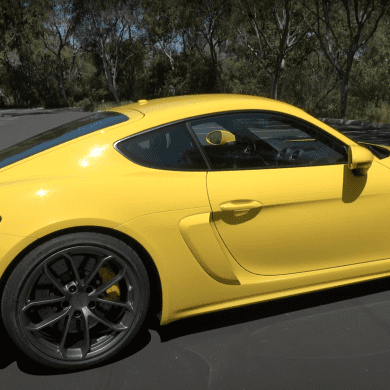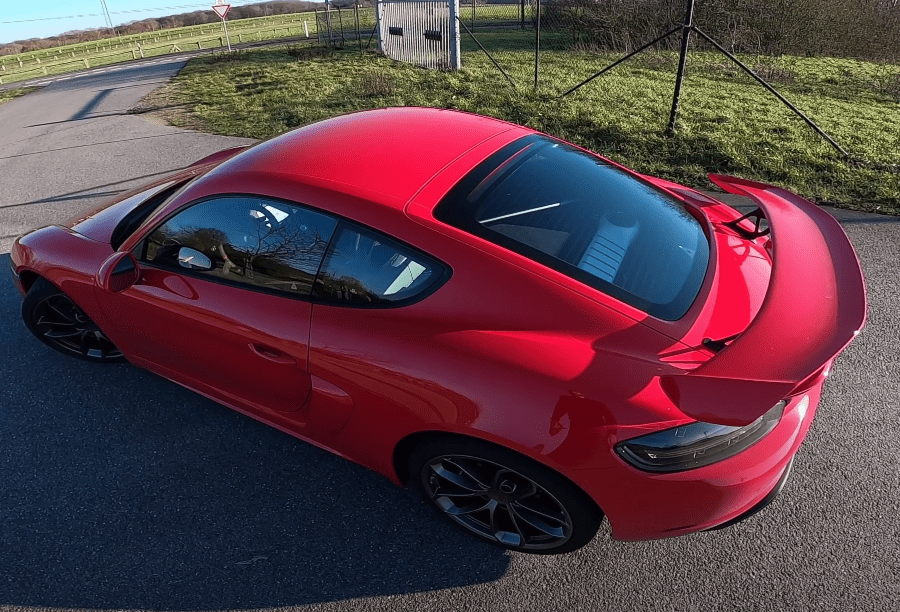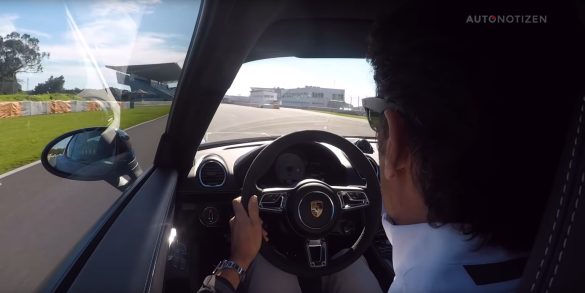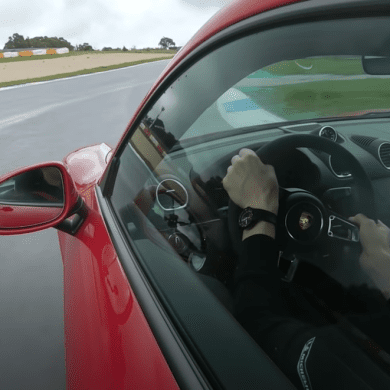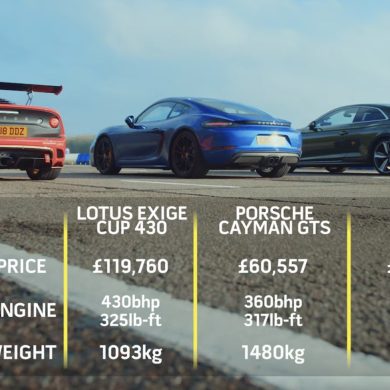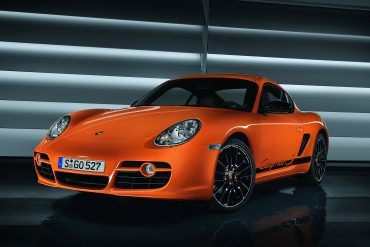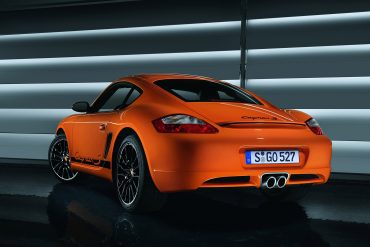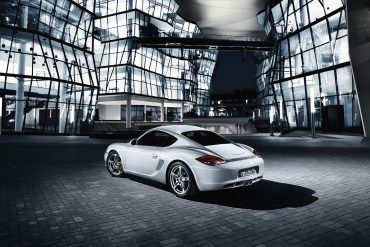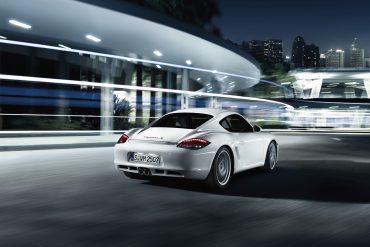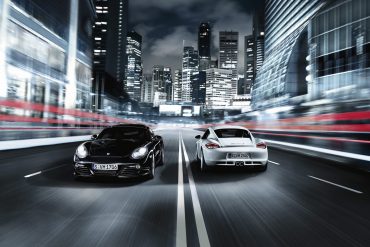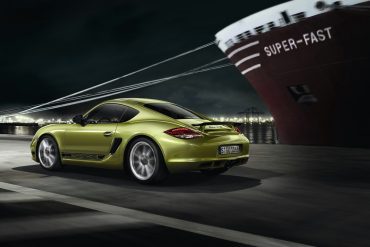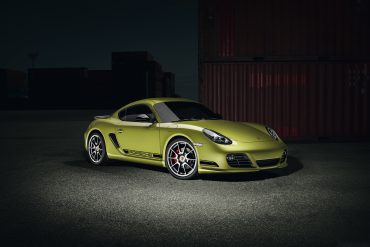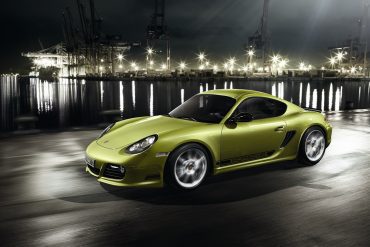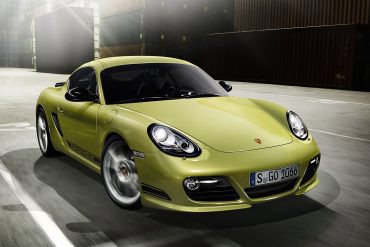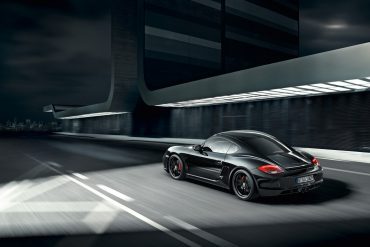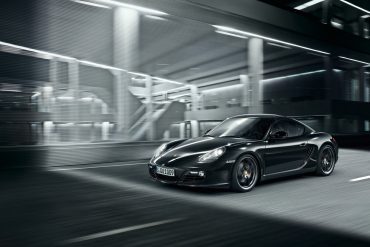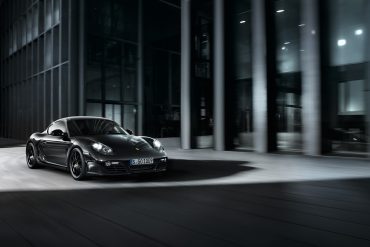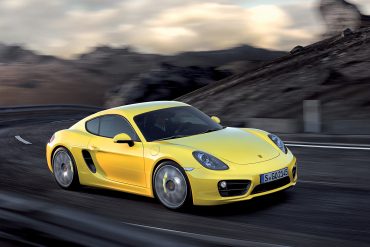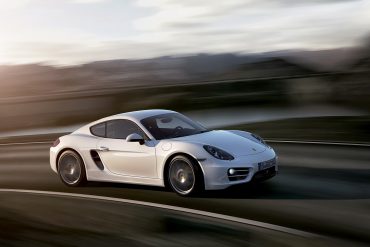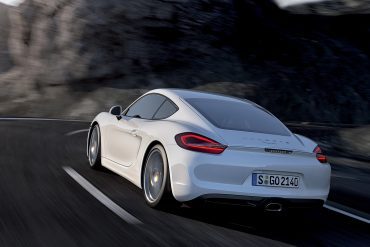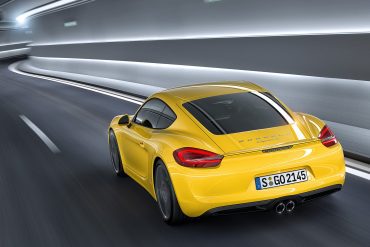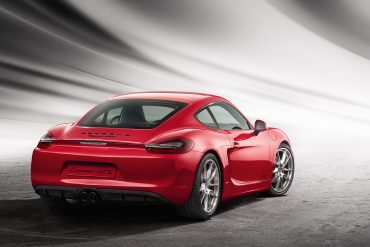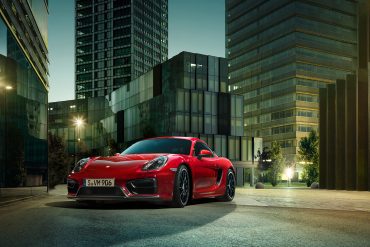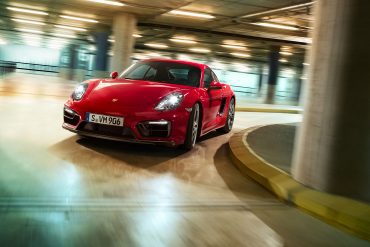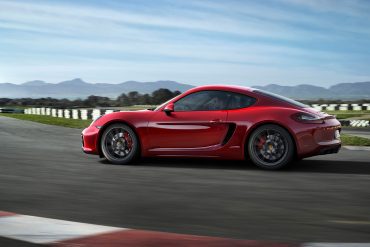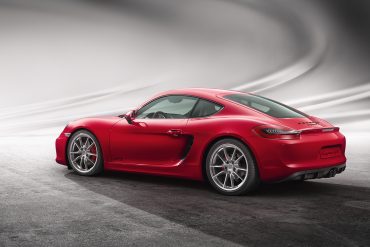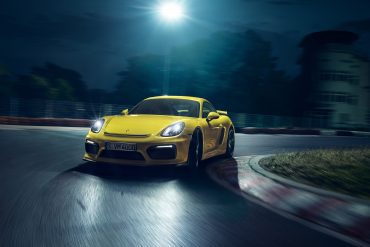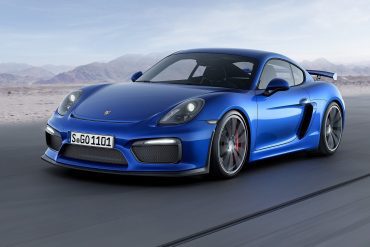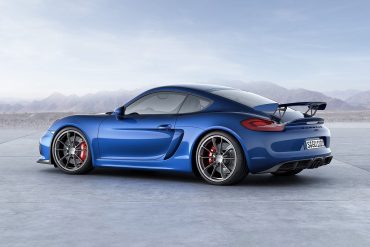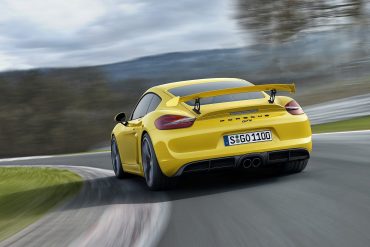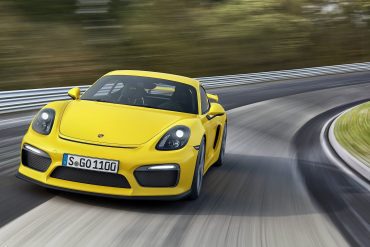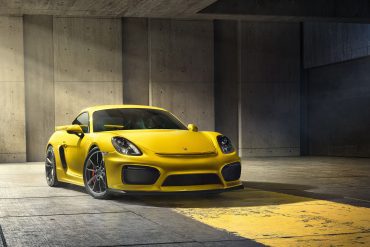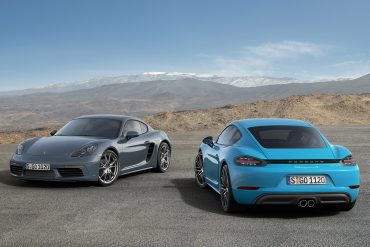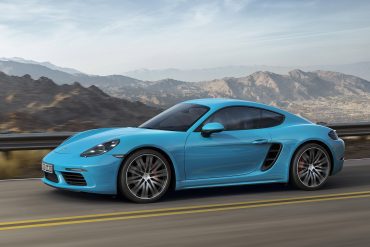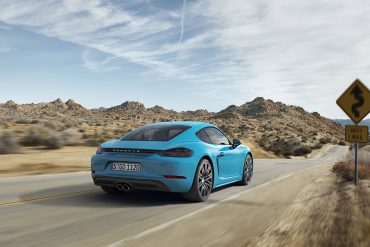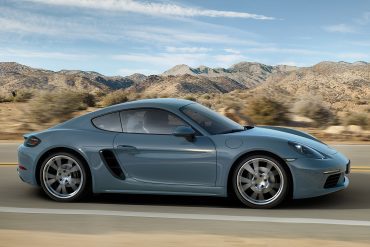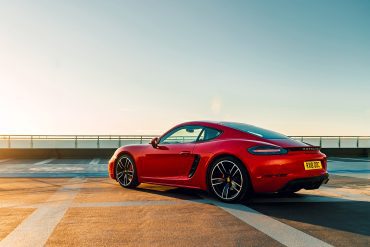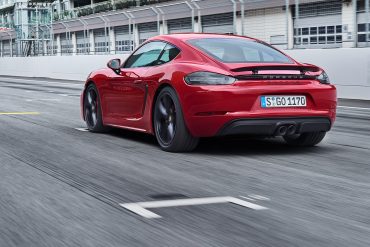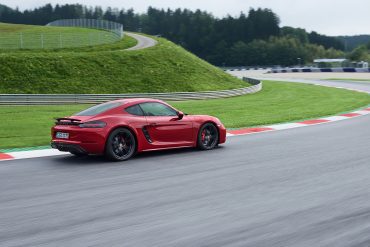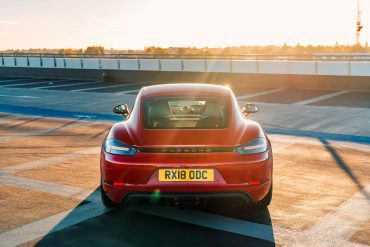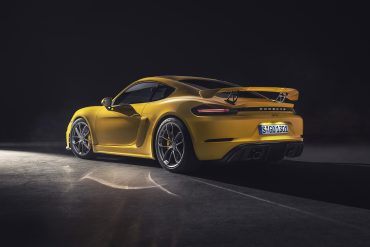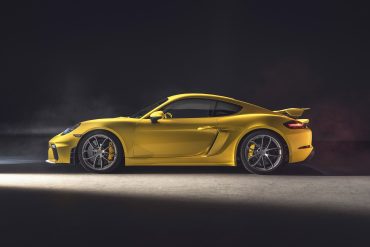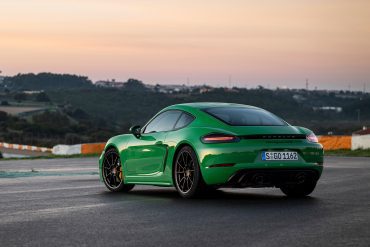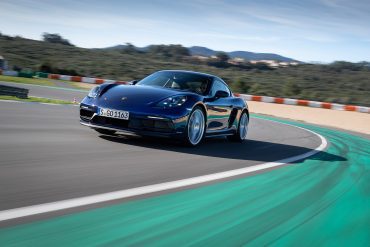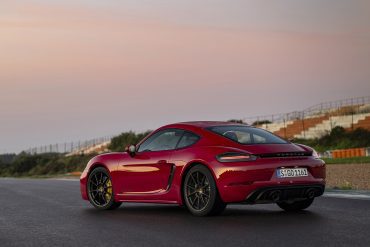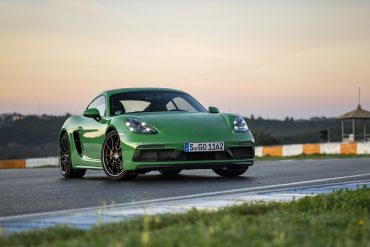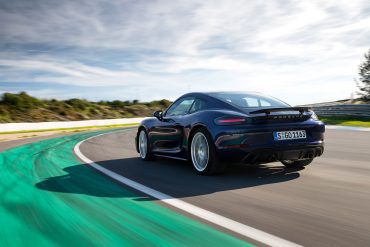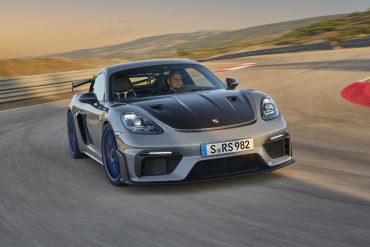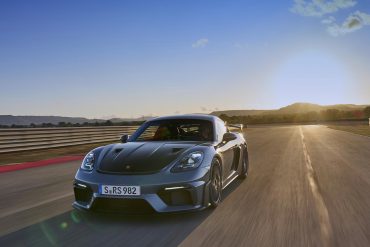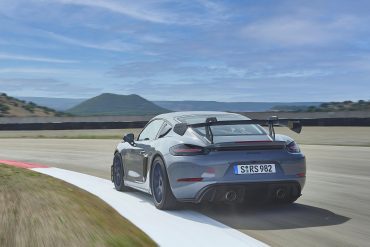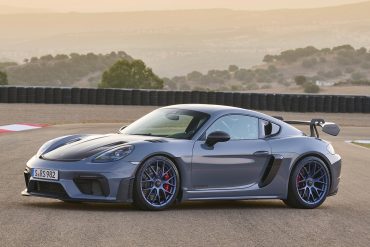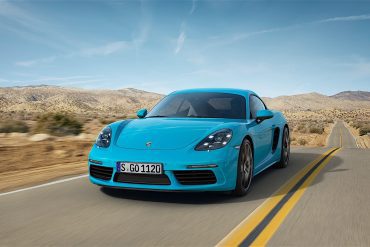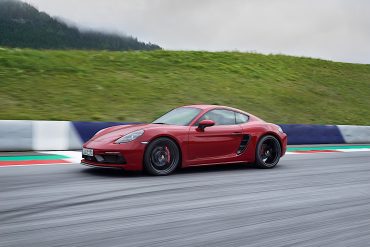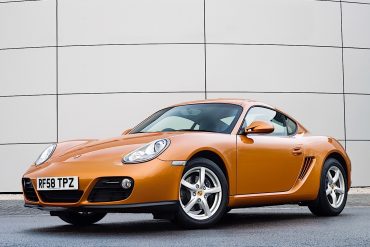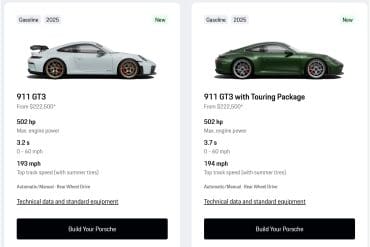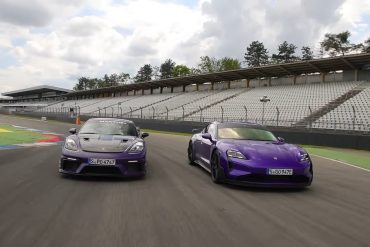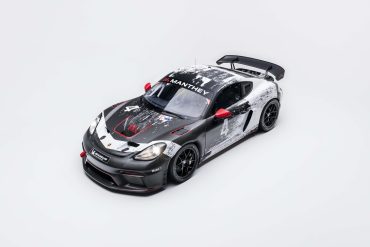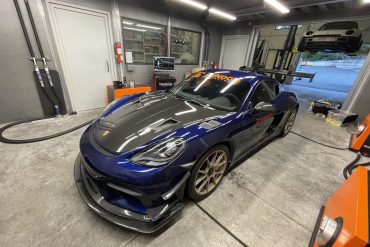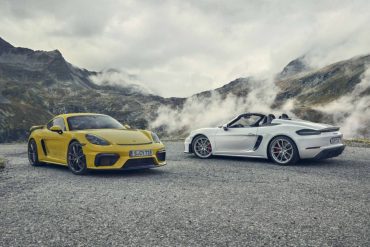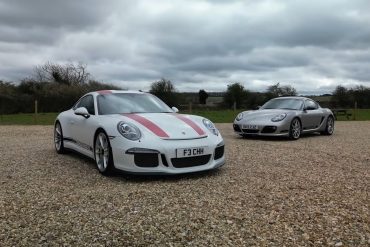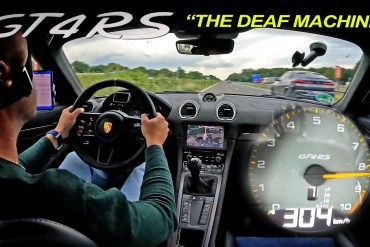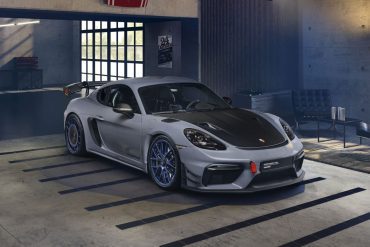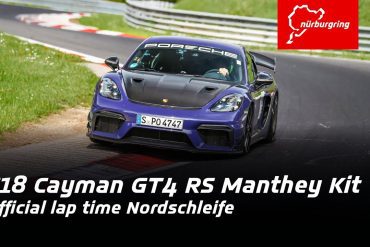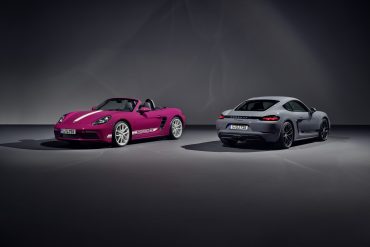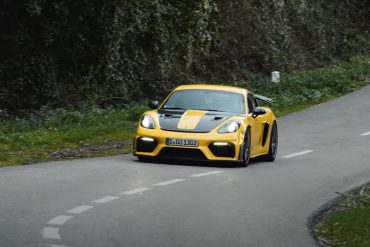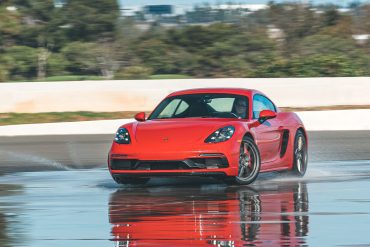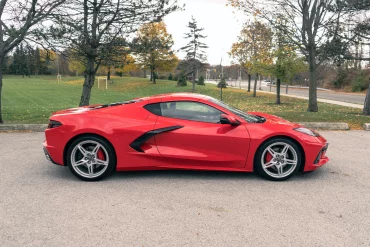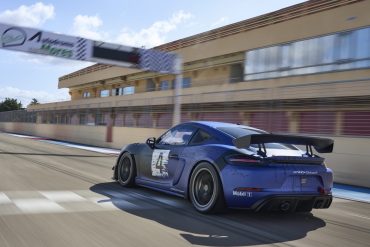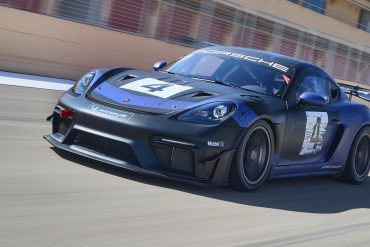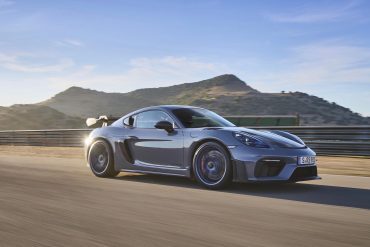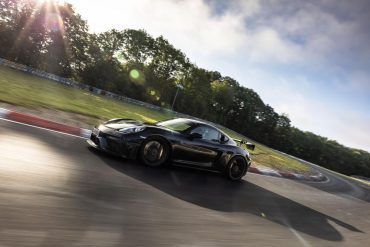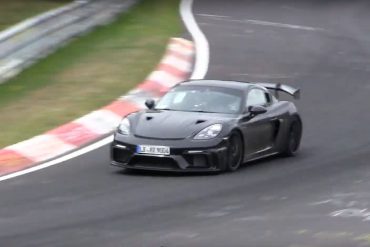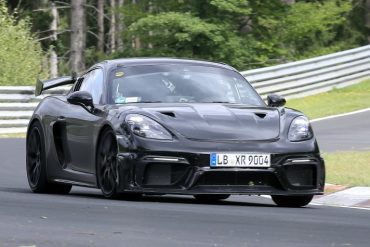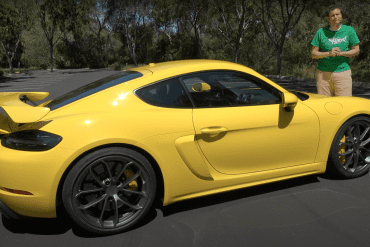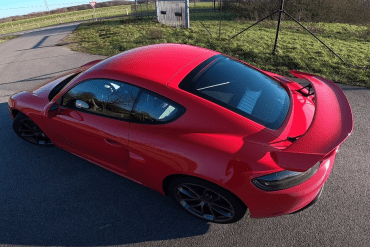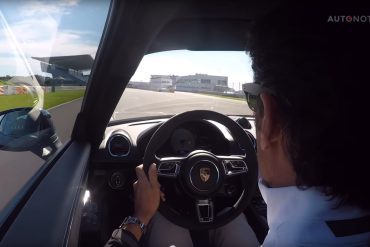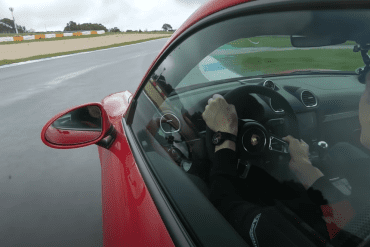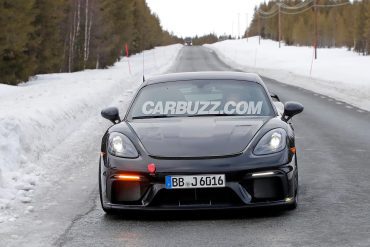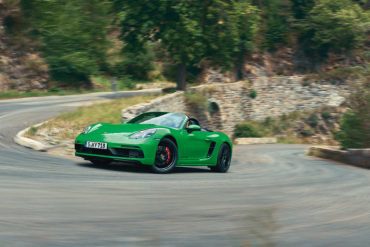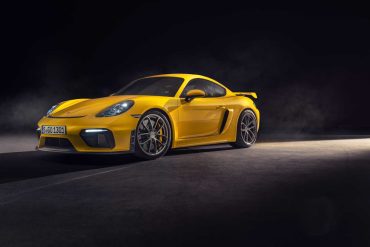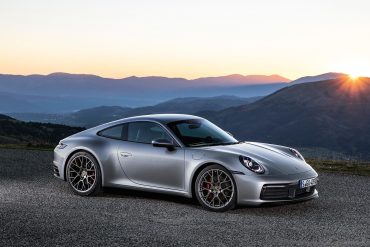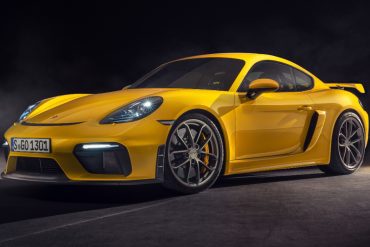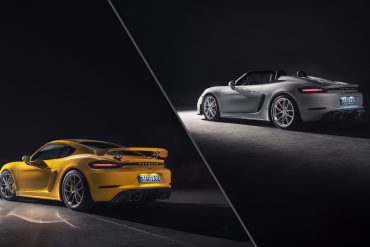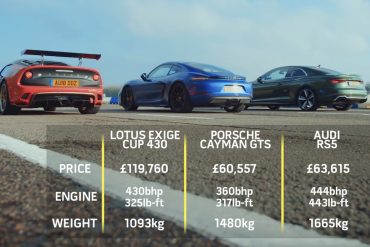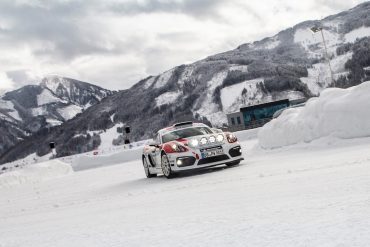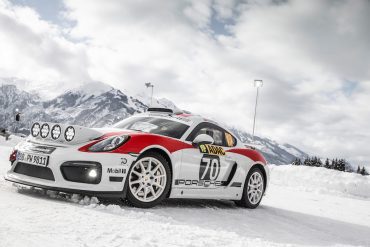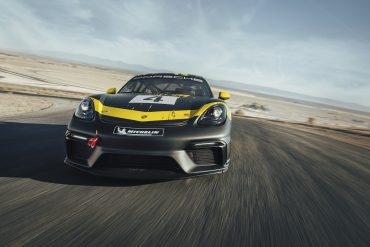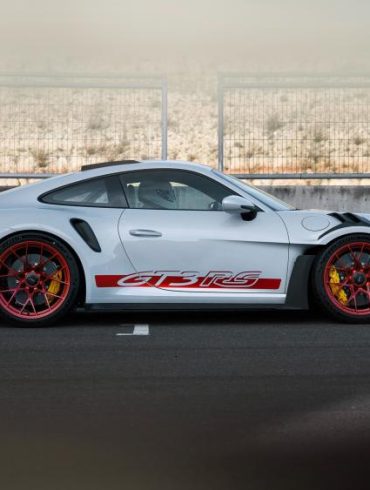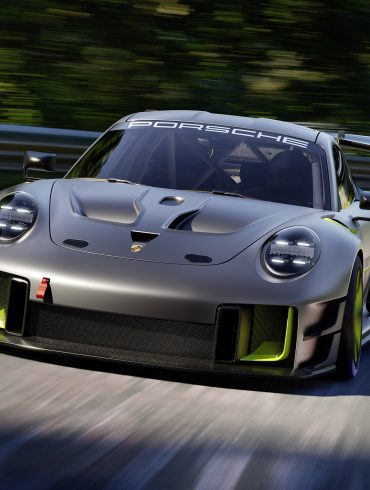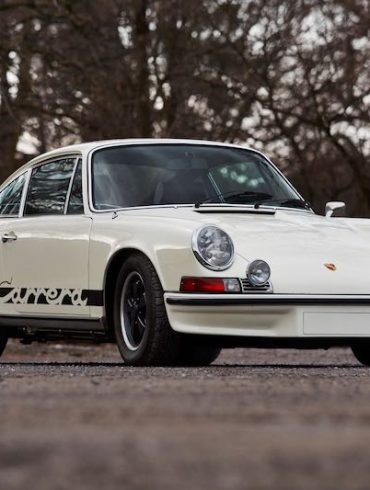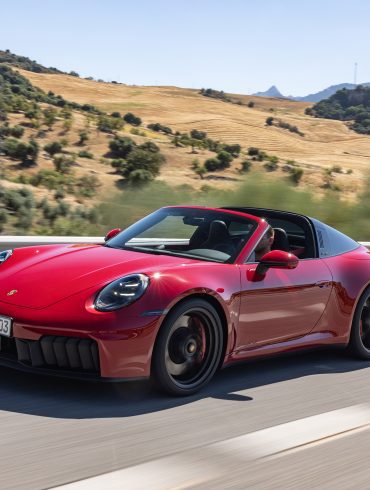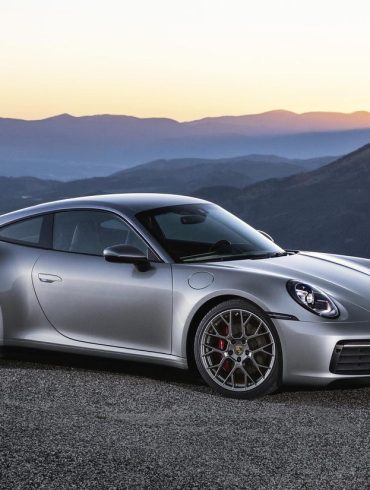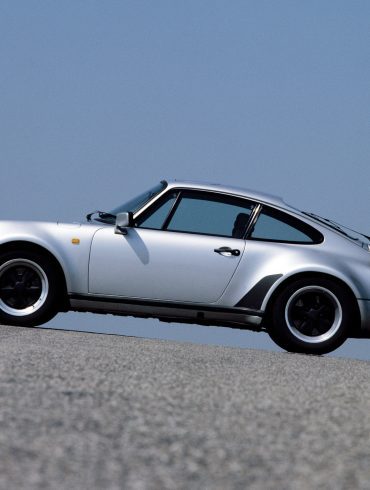2006 Porsche Cayman S After the initial announcement several months ago that Porsche was going to release a small mid-engine coupe, they have finally released the first official images of its anxiously awaited new sports car — the 2006 Porsche Cayman S. Based on the Boxster® series, the two-seat coupe...
Porsche Cayman
The Ultimate Guide - History, Generations & A Guide to Every Cayman Variant
This is the ultimate guide to the Porsche Cayman, the mid-engine marvel that has quietly become a legend in its own right. From its debut as the "baby 911" to its current status as a driver's car par excellence, we explore every generation and variant, uncovering the secrets of its exceptional handling, its thrilling performance, and its undeniable appeal. Prepare for a deep dive into the world of the Cayman, complete with stunning visuals, captivating stories, and valuable insights for enthusiasts and prospective owners alike.
Overview / Cayman Generations / Models In-Depth / Videos & Images / More Updates
The Porsche Cayman - A Mid-Engine Sports Car Masterpiece
A Brief History of the Porsche Cayman
The Porsche Cayman was introduced in 2005 as a mid-engine sports coupe based on the highly successful Boxster roadster platform. Designed to fill the gap between the Boxster and the iconic 911, the Cayman provided a perfect blend of performance, handling, and affordability. Porsche enthusiasts quickly embraced the Cayman for its balanced dynamics and exceptional driving experience, making it one of the most revered models in the Porsche lineup.
Over the years, the Cayman has evolved significantly through multiple generations, each refining its performance, design, and engineering. It has maintained a distinct identity, offering drivers a different flavor of Porsche precision, one defined by its mid-engine balance and nimble handling.
The Development of the Porsche Cayman
The Cayman was conceptualized to offer a fixed-roof version of the Boxster that could provide additional structural rigidity, thereby improving handling and overall performance. The development process focused on creating a coupe that maintained Porsche's legendary driving dynamics while offering a more affordable alternative to the 911.
The name “Cayman” is derived from the caiman, a species of agile, sharp-toothed reptile related to the alligator, reflecting the car's sharp handling and ferocious performance. Each generation of the Cayman has continued to refine this formula, enhancing power, aerodynamics, and technology.
Porsche Cayman Generations
First Generation: 987C (2005–2012)
The first Cayman, internally designated the 987C, debuted in 2005. It shared its platform and many components with the 987 Boxster but featured a fixed roof for improved rigidity. The base model came with a 2.7-liter flat-six engine producing 245 horsepower, while the Cayman S featured a 3.4-liter flat-six generating 295 horsepower. In 2009, the 987C received a facelift that brought direct fuel injection (DFI) and a 7-speed PDK (Porsche Doppelkupplung) transmission option. The power outputs increased to 265 horsepower for the base model and 320 horsepower for the Cayman S. This generation was praised for its precise handling and driver engagement, firmly establishing the Cayman’s reputation.
Second Generation: 981C (2012–2016)
The second-generation Cayman, known as the 981C, was introduced in 2012. This model featured a more aggressive design, with sharper lines and improved aerodynamics. The base model came with a 2.7-liter flat-six producing 275 horsepower, while the Cayman S received a 3.4-liter flat-six with 325 horsepower. Notable additions included a redesigned chassis for improved weight distribution, an updated interior, and enhanced technology. In 2015, the Cayman GT4 was unveiled, featuring a 3.8-liter flat-six from the 911 Carrera S, producing 385 horsepower. The GT4’s manual transmission and track-focused setup made it an instant classic among enthusiasts.
Third Generation: 982C (2016–Present) – The 718 Cayman
The third generation marked a significant change with the introduction of the 718 Cayman moniker, paying homage to Porsche’s legendary 718 race cars. Released in 2016, the 718 Cayman featured turbocharged flat-four engines, a move that stirred controversy among purists. The base 718 Cayman came with a 2.0-liter turbocharged flat-four producing 300 horsepower, while the 718 Cayman S featured a 2.5-liter turbocharged flat-four with 350 horsepower. Despite the downsized engines, performance improved, with 0-60 mph times dropping significantly.
In response to demand for the classic Porsche sound and feel, Porsche introduced the 718 Cayman GTS 4.0 and the 718 Cayman GT4 in 2020. Both models feature a 4.0-liter naturally aspirated flat-six, delivering 394 horsepower in the GTS 4.0 and 414 horsepower in the GT4. These models revived the beloved flat-six symphony and provided exceptional performance for enthusiasts.
Why the Porsche Cayman is Special
The Cayman holds a unique place in Porsche’s lineup for several reasons. Its mid-engine layout gives it a near-perfect weight distribution, resulting in exceptional handling, balance, and responsiveness. The driving experience is pure and engaging, with communicative steering, precise handling, and the availability of a manual transmission that connects the driver to the road.
Compared to the 911, the Cayman provides a more accessible entry point to Porsche ownership while delivering high levels of performance. The variety within the Cayman lineup, from the base model to the track-focused GT4, caters to a wide range of driving preferences. Additionally, the timeless design of each generation, with its sleek, athletic lines, ensures the Cayman remains contemporary and visually appealing.
Specifications and Engines Overview
The Cayman’s engines have evolved through the generations. The 987C offered a 2.7-liter flat-six in the base model with 245 to 265 horsepower and a 3.4-liter flat-six in the Cayman S producing 295 to 320 horsepower. The 981C generation introduced similar engine sizes but increased power to 275 horsepower for the base model and 325 horsepower for the Cayman S. The standout was the GT4 with its 3.8-liter engine delivering 385 horsepower.
With the 982C (718 Cayman), Porsche shifted to turbocharged flat-four engines. The base model featured a 2.0-liter engine producing 300 horsepower, while the Cayman S had a 2.5-liter engine producing 350 horsepower. Porsche later brought back the naturally aspirated flat-six with the 718 Cayman GTS 4.0 and the GT4, offering 394 and 414 horsepower, respectively.
The Future of the Porsche Cayman
As Porsche continues its journey toward electrification, the future of the Cayman is poised for significant change. An all-electric version of the Cayman is expected to arrive by the mid-2020s, potentially based on the Porsche Mission R concept. This electric Cayman promises to maintain the model’s agility, balance, and driving excitement while introducing new levels of efficiency and sustainability.
While some enthusiasts may lament the potential departure from internal combustion engines, Porsche’s commitment to preserving the driving experience ensures that the spirit of the Cayman will live on in new and exciting forms.
Conclusion
The Porsche Cayman has carved out a legacy defined by balance, precision, and pure driving joy. From its debut in 2005 to its latest 718 iterations, the Cayman continues to evolve while staying true to its core identity. Whether you're a long-time Porsche fan or a newcomer to the brand, the Cayman represents a thrilling gateway to the world of Porsche performance. As we look to the future, the Cayman remains a shining example of what a modern sports car can and should be.
Porsche Cayman Fun Facts
Believe it or not, the Cayman project was almost canceled several times during its development. Thankfully, it persevered and became a success story.
The Cayman is named after the Caiman, a reptile related to alligators. This reflects the car's agile and somewhat "snappy" nature.
The Cayman often gets overshadowed by its more famous sibling, the 911. However, those in the know recognize it as a hidden gem that offers a pure and rewarding driving experience.
More Cayman Research
Porsche Cayman Generations
The Cayman Evolution
The Porsche Cayman made its debut in 2005 as a mid-engine coupe derived from the Boxster platform, slotting between the Boxster and the 911. The first generation, known as the 987C, featured a 2.7-liter flat-six engine in the base model and a 3.4-liter flat-six in the Cayman S. It was praised for its balanced handling and driver-focused experience. In 2012, the 981C second generation arrived, with sharper styling, improved aerodynamics, and more refined interiors. This generation offered the same engine options but with slight power increases, cementing the Cayman as a standout in the sports car segment. Special variants like the Cayman GT4 also debuted, equipped with a 3.8-liter engine borrowed from the 911 Carrera S and a manual transmission, thrilling enthusiasts.
The third generation, the 982C, launched in 2016 under the 718 Cayman moniker. This model marked a controversial shift to turbocharged four-cylinder engines, including a 2.0-liter in the base model and a 2.5-liter in the 718 Cayman S. Despite the downsized engine, the performance was impressive, and handling remained exceptional. In 2020, Porsche responded to purists by introducing the 718 Cayman GT4 and the GTS 4.0, both powered by a naturally aspirated 4.0-liter flat-six engine, reviving the symphony of the traditional flat-six roar. Across all its generations, the Cayman has maintained a reputation for precision, balance, and delivering a driving experience that rivals more expensive sports cars.
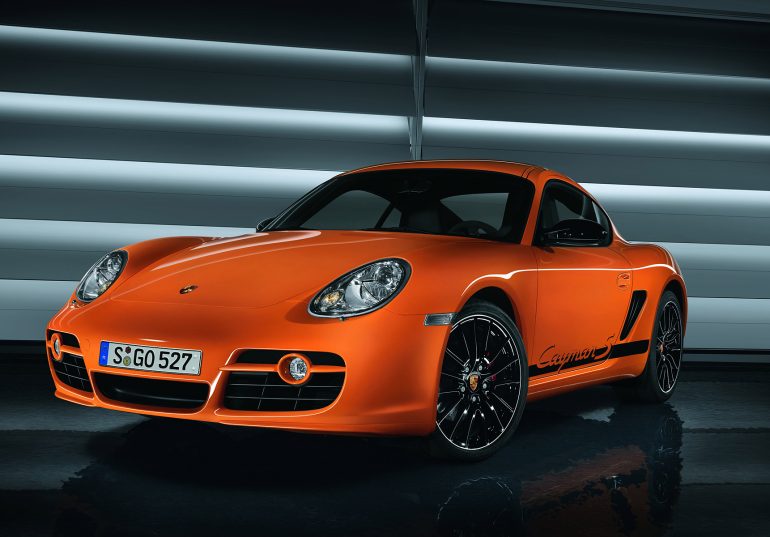
987 Generation Cayman Specs
Type: 987C (987.1, 987.2)
Generation: First Generation
Manufacturer: Porsche AG
Production Years: 2006 - 2012
Model Years: 2006 - 2012
Body Style: 2-Door Coupe
Layout: Mid-engine, rear-wheel drive
Engines: 2.7 L M96.25 / M97.20 flat-6 (2005–2008), 2.9 L M96.26/MA1.20 flat-6 (2009–2012), 3.2 L M96.26 flat-6 (2005–2006), 3.4 L M97.21/M97.22/MA1.21/MA1.22 flat-6 (2007–2012)
Transmission: 5-speed automatic, 5-speed manual, 6-speed manual, 7-speed PDK
Official photos: 2005 May 23
Premiere: 2005 September 14, IAA Frankfurt motor show press day
Market launch: 2005 November
Porsche Cayman (987) (2007–2012)
Porsche had teased fans with the prospect of a coupe version of the Boxster roadster so it was no surprise when we first saw the Cayman S in 2005, created on the new 987 Boxster platform. With a new body shell that included a fixed hard top and that amazing Boxster chassis as a base, the Cayman was epic from day one.
In the mid-2000s, Porsche found itself at an interesting crossroads. The iconic 911 was thriving, and the Boxster had successfully established itself as a beloved roadster for those who craved wind-in-your-hair driving. Yet, a gap lingered in the lineup – a space for something that bridged the gap between these two machines. Enter the Porsche Cayman (987): a perfectly poised mid-engine coupe that promised the agility of a Boxster and the hard-edged precision of a fixed-roof sports car.
In 2005, when Porsche unveiled the first Cayman, enthusiasts quickly took notice. The Cayman S was the first to hit the roads, powered by a lively 3.4-liter flat-six engine that produced a thrilling 295 horsepower. From the first twist of the ignition, the Cayman S made its intentions clear. This wasn’t merely a “Boxster with a roof” – it was something more rigid, more precise, and eager to carve through mountain roads with an intensity that seemed to defy its place in the Porsche hierarchy.
The engine sat behind the driver’s seat, a layout borrowed from the Boxster, but in the Cayman, the fixed roof added a new level of structural integrity. This gave the car a beautifully balanced feel, a dance partner that always knew where to place its feet. Critics praised its handling, calling it one of the most balanced sports cars ever made. The Cayman’s short wheelbase and low center of gravity meant it hugged corners with unwavering confidence, allowing drivers to explore their limits without fear.
The following year, in 2006, Porsche introduced the standard Cayman. While it may have been the "entry-level" model, its 2.7-liter flat-six engine was anything but ordinary. Producing 245 horsepower, it delivered a purer, slightly less aggressive experience than the S, but one that still brimmed with character. The sound of that flat-six engine reverberating off canyon walls became a defining trait of the Cayman experience – a mechanical symphony for the lucky few behind the wheel.
But Porsche wasn’t finished refining the Cayman. In 2009, the 987 generation received a significant facelift. This wasn’t just about aesthetics; under the hood, changes made the Cayman even more exciting. The base model grew to a 2.9-liter engine, now delivering 265 horsepower, while the Cayman S saw its 3.4-liter engine upgraded to produce 320 horsepower. Porsche also introduced the 7-speed PDK dual-clutch transmission as an option, a gearbox that shifted with lightning speed and transformed the Cayman’s character. The old Tiptronic automatic was gone, and in its place, the PDK ensured the Cayman stayed relevant in an era where technology was advancing rapidly.
The Cayman’s story, though, was about more than just numbers. It was about the feeling of driving something that seemed to anticipate your every move. The steering, weighty and precise, felt alive in your hands. The car’s mid-engine layout meant that weight distribution was nearly perfect, allowing drivers to make corrections mid-corner with an ease that few cars could match. Whether you were a seasoned track-day warrior or a weekend enthusiast, the Cayman made you feel like a hero.
Yet, despite its brilliance, the Cayman lived under the shadow of its older brother, the 911. Some believed Porsche intentionally held the Cayman back, fearful that it might outperform the 911 if given free rein. The Cayman’s engines, while potent, were always slightly detuned compared to what they could have been. But for those who drove it, this only added to the car's mystique. The Cayman felt like a hidden gem – a secret weapon for those who knew that balance and handling sometimes trumped outright power.
Of course, like any great story, the Cayman’s tale includes a few cautionary notes. Owners have often warned of potential issues with the IMS bearing (Intermediate Shaft Bearing) in early models, a problem that could lead to catastrophic engine failure if not addressed. Additionally, rear main seal leaks were known to plague some cars, while the air-oil separator occasionally required replacement. Yet, for those willing to maintain their Cayman with the care it deserved, these were minor hurdles in an otherwise thrilling ownership experience.
Inside, the Cayman’s cabin was a lesson in Porsche’s understated luxury. The seats held you snugly, the gauges were clear and purposeful, and everything was oriented toward the driver. This was a cockpit for those who cared about driving above all else. Even on long journeys, the Cayman proved itself a surprisingly comfortable companion, with enough storage to make it practical for weekend getaways.
As the sun began to set on the 987 generation in 2012, Porsche enthusiasts reflected on what the Cayman had achieved. It had taken a place of its own in the sports car world – not just a lesser 911, but a car with its own identity. For many, the Cayman 987 remains the purest expression of what a Porsche coupe can be: focused, balanced, and endlessly rewarding.
If you find yourself behind the wheel of a Cayman 987 today, know that you’re driving more than just a car. You’re experiencing a chapter in Porsche’s history where engineering brilliance and driving pleasure came together in perfect harmony.
The Cayman S is a revelation. It's a proper driver's car that's every bit as good as, if not better than, the 911. It's beautifully balanced, incredibly rewarding to drive, and offers exceptional value for money
Evo Magazine (2006)
Porsche Cayman (987) Variants
The Cayman S was the first production Cayman model to be released to the public as a 2006 model year offering. A year later, Porsche gave us the base Cayman. As expected, there were very few changes to the Cayman S in 2007 and 2008, with some mainly cosmetic changes and additional options. The Cayman engine gets a 200 cm³ boost in displacement and a gain of 20 horsepower while the new Cayman S engine doesn't gain any displacement, but thanks to the fewer moving parts and the introduction of Direct Fuel Injection (DFI), it produces 25 more horsepower. In the middle of 2008, Porsche introduced its first 987 Cayman limited edition car, the Design Edition 1. There were several more special editions over this generation.
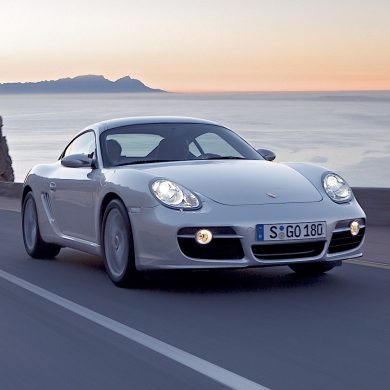
Porsche Cayman S (2006 – 2008)
Years: 2006 - 2008
Engine: 3.4 L Nat Asp Flat-6
Power: 295 bhp @ 6250 rpm
Torque: 251 ft lbs @ 4400 rpm
0-60 mph: 5.1 seconds
Top Speed: 171 mph
After the initial announcement that Porsche was going to release a small mid-engine coupe, we were all excited. In 2005 we finally got the Cayman S. A fast, mid-engine coupe in the Porsche lineup, starting with the S version as a 2006 model year car (the base model came a year later). The 2006 Porsche Cayman S was based on the Boxster series, the two-seat coupe incorporated dramatic new styling, a powerful 295 hp engine, and other features.
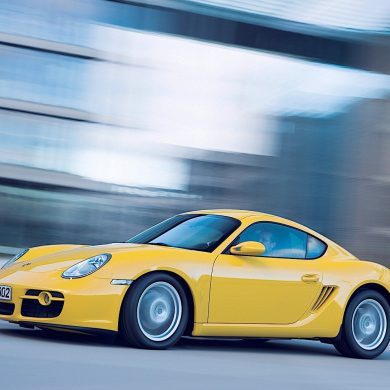
Porsche Cayman (2007 – 2008)
Years: 2007 - 2008
Engine: 2.7 L Nat Asp Flat-6
Power: 245 bhp @ 6500 rpm
Torque: 201 ft lbs @ 4600 rpm
0-60 mph: 5.8 seconds
Top Speed: 160 mph
A year after the Cayman S and the second generation of the Boxster were unveiled, Porsche released the non-S version of its mid-engine sport-coupe vehicle. The “regular” Cayman was still a sports car that could top a 0 to 100 kph (0-62 mph) in 6.1 seconds so it couldn't be called a “slow” car. It was slower than its brother S, but it was still a daily-driver sports-car. The Cayman was built to be not only a fast and nimble car but a practical vehicle as well.
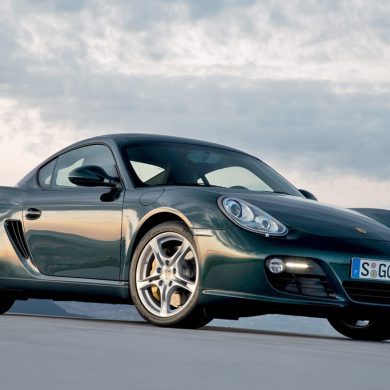
Porsche Cayman S (2009 – 2012)
Years: 2009 - 2012
Engine: 3.4 L Nat Asp Flat-6
Power: 320 bhp @ 7200 rpm
Torque: 273 ft lbs @ 4750 rpm
0-60 mph: 4.8 seconds
Top Speed: 172 mph
Four years after the introduction of the Cayman S, the sportier version of the mid-engine sports coupe Porsche was refreshed. It was even faster and could carry more cornering speed. The facelifted version of the Cayman S offered a completely enhanced package. From the exterior to the interior, from the engine to the gearbox and suspension, it was reworked. The engine was kept at 3.4-liter displacement, but due to its new direct-fuel injection system, power was increased by 25 hp.
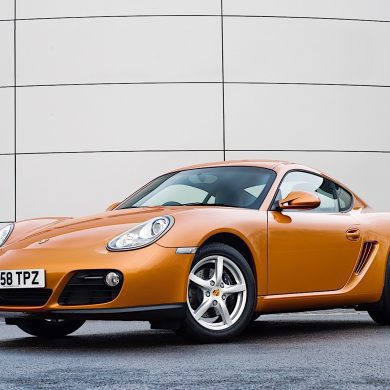
Porsche Cayman (2009 – 2012)
Years: 2009 - 2012
Engine: 2.9 L Nat Asp Flat-6
Power: 255 bhp @ 6400 rpm
Torque: 214 ft lbs @ 4400 rpm
0-60 mph: 5.4 seconds
Top Speed: 165 mph
Four years after the introduction of the Cayman S, and three after the regular Cayman, the mid-engine sport-coupe from Porsche received an important update. The facelifted version of the Cayman offered a completely enhanced package. From the exterior to the interior, from the engine to the gearbox and suspension, it was reworked. The engine displacement was increased from 2.7 to 2.9-liter and received direct fuel injection.
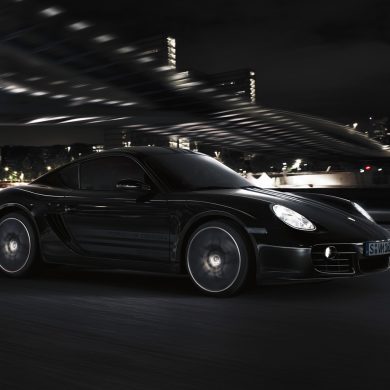
Porsche Cayman S Design Edition 1 (2008)
Years: 2008
Engine: 3.4 L Nat Asp Flat-6
Power: 295 bhp @ 6250 rpm
Torque: 251 ft lbs @ 4400 rpm
0-60 mph: 5.1 seconds
Top Speed: 171 mph
In the middle of 2008, Porsche introduced the limited edition Cayman Design Edition 1. The Design Edition 1, also know as the DE1, was a Cayman S packaged with many exclusive cosmetic options intended to commemorate the 35th anniversary of Porsche Design. This car was clearly designed for the Porsche enthusiasts who wanted to own a very special Cayman. Buyers received some pretty cool merchandise.
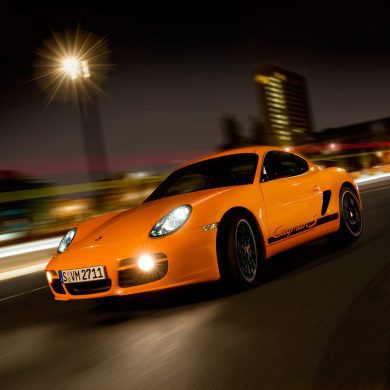
Porsche Cayman S Sport (2009)
Years: 2009
Engine: 3.4 L Nat Asp Flat-6
Power: 303 bhp @ 6250 rpm
Torque: 251 ft lbs @ 4400 rpm
0-60 mph: 5.1 seconds
Top Speed: 171 mph
In late 2008, Porsche introduced the limited edition Cayman S Sport. It was a Cayman S packaged with many sport options. Beyond sport options, the Cayman S Sport received new DME software maps created to work with the Porsche Sport Exhaust and a unique Twin Chamber Dual Output Tailpipe that supply the Cayman S Sport with 303 hp at 6,250 RPM, making it the first Cayman to break the 300 hp.
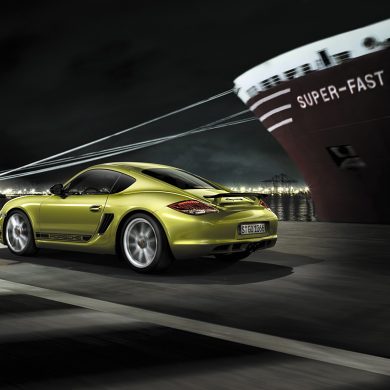
Porsche Cayman R (2012)
Years: 2012
Engine: 3.4 L Nat Asp Flat-6
Power: 330 bhp @ 7400 rpm
Torque: 273 ft lbs @ 4750 rpm
0-60 mph: 4.3 seconds
Top Speed: 175 mph
Porsche CEO Matthias Mueller unveiled the 2012 Cayman R to an excited audience at the Los Angeles International Auto Show. Porsche pretty much threw the kitchen sink at this one, applying all they know and have available without actually redesigning the car. Every performance option on the list, and then some that weren't on the list have found their way into the Cayman R. A weight savings of 121 lbs. (55 kg) was achieved and it transformed the Cayman. Going out on a limb here, but we think the Cayman R may be one of the best Porsche cars ever.
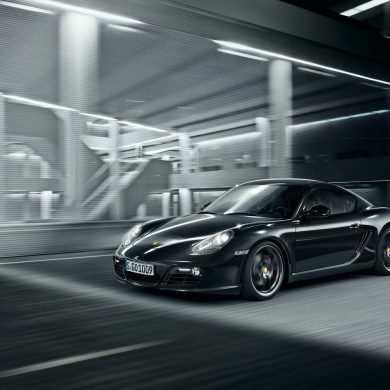
Porsche Cayman S Black Edition (2012)
Years: 2012
Engine: 3.4 L Nat Asp Flat-6
Power: 330 bhp @ 7400 rpm
Torque: 273 ft lbs @ 4750 rpm
0-60 mph: 4.9 seconds
Top Speed: 175 mph
The Limited Edition Cayman S Black combines many of the high performance benefits found only in the 2012 Cayman R with many other desirable options off the list, options that when combined create a distinct personality for this special car. After the R hit the scene, many potential buyers complained of the inability to order one with many of the highly desirable street options, particularly PASM. The Cayman S Black Edition gets the 330 BHP engine found in the R but without all of the other performance focus.
Porsche Cayman (981) (2013 - 2016)
The 981 generation Cayman got a beautiful design update as well as revised engine and transmission specifications. The chassis was also revised and was available in both the standard trim with a 2.7-litre engine, and in the S trim with a 3.4-litre engine.
Introduced in 2012, the 981 Cayman was a car born out of a relentless pursuit of balance and precision. Porsche had taken everything it learned from the previous 987 and elevated it to new heights. For the engineers at Stuttgart, the goal was simple yet ambitious: to create a car that captured the pure essence of driving.
When the wraps came off the 981 Cayman at the 2012 Los Angeles Auto Show, it was clear this was no ordinary sports car. The design was sharper, sleeker, and more sophisticated than ever before. The 981 shared its DNA with the Boxster, but where the Boxster exuded freedom and open-air joy, the Cayman was about purpose and intensity.
The body was longer, lower, and wider than the model it replaced. Flowing lines swept from the headlights to the rear haunches, where a set of sculpted air intakes fed the eager flat-six engine. The headlights, now more angular, seemed to peer ahead with an intense focus. The LED tail lights glowed like fiery streaks at dusk, accentuating the car’s poised stance.
Inside, the driver’s seat felt like a command center. The center console, inspired by the 911 Carrera (991), swept upwards, housing a series of neatly arranged controls and a touchscreen for Porsche’s latest infotainment system. Leather and aluminum trims added to the sense of refinement. Everything was angled towards the driver, a subtle reminder that in this cockpit, you were the one in control.
But the real magic of the 981 Cayman lay beneath its sculpted skin. At its core, Porsche placed a naturally aspirated flat-six engine, the type of powerplant that had defined the brand for decades. The base model’s 2.7-liter engine produced 275 horsepower, a figure that seemed modest on paper but came alive on the road.
For those who craved more power, the Cayman S offered a 3.4-liter flat-six with 325 horsepower. The S could launch from 0 to 60 mph in just 4.7 seconds, a rush of acceleration that pinned you back into your seat, heart pounding and eyes wide.
And then there was the Cayman GTS, a machine that seemed to have a heartbeat of its own. With 340 horsepower, a symphony of intake growls and exhaust pops filled the air as the GTS danced through corners. The optional Sport Exhaust System amplified the experience, a switch that turned the Cayman’s voice from a purr to a roar.
The engine was paired with either a 6-speed manual gearbox, offering a tactile, mechanical connection to the car, or Porsche’s lightning-quick 7-speed PDK dual-clutch transmission. Each shift, whether by hand or paddle, was a moment of precision.
On the road, the 981 Cayman revealed its true character. The mid-engine layout gave it an almost supernatural balance. As the driver pushed into a sweeping corner, the car responded with a grace that seemed to defy physics. The front end darted in with razor-sharp accuracy, while the rear stayed planted, rotating just enough to make you feel like part of the machine.
Porsche had worked wonders with the chassis. The electric power steering—a controversial addition for purists—felt as if it had been tuned by the hand of an artisan, delivering feedback that kept the driver’s senses alive. The available Porsche Active Suspension Management (PASM) allowed the car to switch between composed comfort and track-hungry aggression with the flick of a switch.
But the true joy of the 981 Cayman was found in the details. The way the car settled itself under hard braking, the satisfying weight of the steering wheel, the way the engine’s note climbed as you chased the redline—all these elements came together to create a driving experience that was as rich as it was addictive.
Each version of the 981 Cayman had its own personality. The base Cayman was the purist’s choice, a car that rewarded momentum and finesse. Its 2.7-liter engine encouraged the driver to work the gearbox and find the rhythm of the road. It was not the fastest, but it was perhaps the most rewarding.
The Cayman S added muscle to the mix. Its 3.4-liter engine provided effortless power, making highway passes and canyon sprints a thrilling exercise. The S struck a balance between precision and potency, a car that could thrill on the track and relax on the daily commute.
And then there was the Cayman GTS. This was the athlete of the family, dressed in subtle performance cues and armed with every tool in Porsche’s dynamic arsenal. The GTS felt alive, as if it anticipated every command before you gave it. On a twisty road, it was a dance partner that never missed a step.
It was one of the last Caymans to feature a naturally aspirated flat-six engine, a dying breed in an age of turbocharging and downsizing. This alone made the 981 special, a bridge between Porsche’s rich heritage and an uncertain future.
When the 981 Cayman bowed out in 2016, it left behind a legacy of pure, unfiltered driving joy. Its successor, the 718 Cayman (982), brought turbocharged engines and new technology, but many enthusiasts still hold the 981 close to their hearts. The howl of its flat-six engine, the sublime balance of its chassis, and the tactile joy of its controls make it a modern classic in every sense.
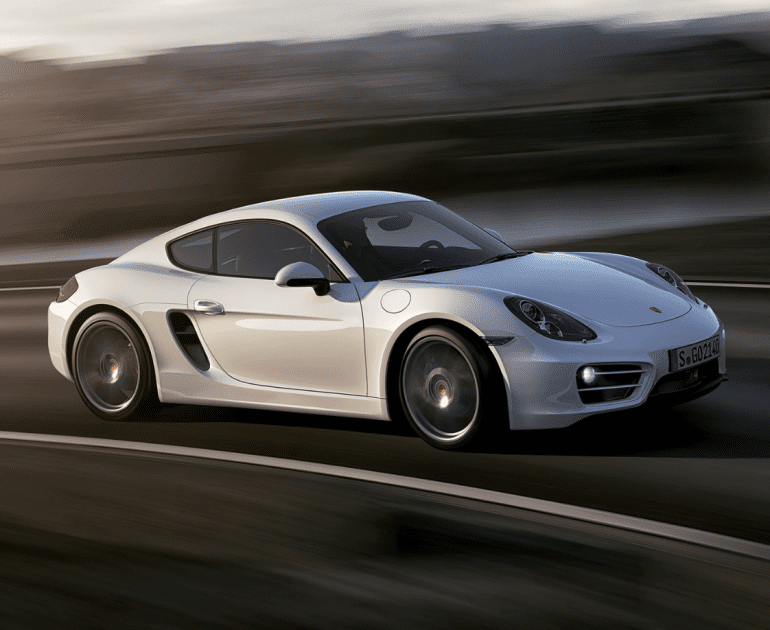
981 Generation Cayman Specs
Type: 981C (981)
Generation: Second Generation
Manufacturer: Porsche AG
Production Years: 2012 - 2016
Model Years: 2013 - 2016
Body Style: 2-Door Coupe
Layout: Mid-engine, rear-wheel drive
Engines: 2.7 L MA1.22 flat-6, 3.4 L MA1.23 flat-6, 3.8 L MA1.24 flat-6
Transmission: 6-speed manual, 7-speed PDK
Official photos: 2012 November 28
Premiere: 2012 November 28 at Los Angeles Auto Show
The Cayman has always been a great driver's car, but the 981 takes it to another level. It's sharper, more responsive, and more engaging than ever before.
Auto Express (2012)
Porsche Cayman (981) Variants
The Cayman S benefitted from the same engine and running gear as Porsche's latest 3.4-litre version of the 911 while the base Cayman a 2.7-litre engine. The Cayman GTS was introduced in 2014 and it got a slightly more powerful engine, a new body kit, new 20-inch Carrera S wheels, new Bi-Xenon headlights, and a new sports exhaust system. In 2015, the ultimate track oriented version of the Cayman was launched and it was an instant hit. The Cayman GT4 had a revised and a slightly de-tuned version of the 3.8-litre flat-six engine from the 911 (991) Carrera S. The GT4 was available only with a 6 speed manual transmission and weighed 1,340 kg, and had a number of track-focused options and hardware changes.
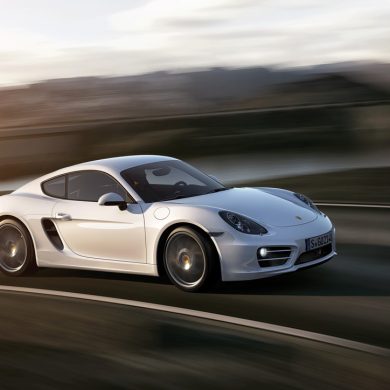
Porsche Cayman (2013 – 2016)
Years: 2013 - 2016
Engine: 2.7 L Nat Asp Flat-6
Power: 261 bhp @ 6700 rpm
Torque: 206 ft lbs @ 4500 rpm
0-60 mph: 5.2 seconds
Top Speed: 164 mph
The 2013 model year saw the introduction of an all new platform, the new 981 Cayman. The differences between the 981 and 987 were significant, but not unexpected as many of the new technologies were already introduced in the new 991 and 981 Boxster. This is a big year with lots of changes in many areas. The base engine for the Cayman was a 2.7-liter flat-six unit that boosted out 236 hp and it was mated to a standard 5-speed gearbox. A 5-speed Tiptronic sequential gearbox was available as an option. This is a great everyday sports car and probably the best deal around at the moment. Get one in manual, add a sports exhaust and enjoy it forever. Amazing.
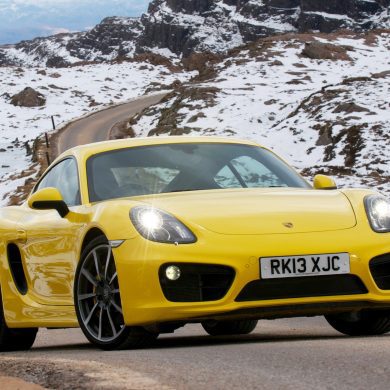
Porsche Cayman S (2013 – 2016)
Years: 2013 - 2016
Engine: 3.4 L Nat Asp Flat-6
Power: 311 bhp @ 6700 rpm
Torque: 265 ft lbs @ 4500 rpm
0-60 mph: 4.6 seconds
Top Speed: 173 mph
For 2013, Porsche gave us the new 981 generation Cayman. The Cayman S engine displacement is unchanged at 3.4 liters. Power is increased by 5 horsepower to 325, shooting the S from 0-60 mph in just 4.4 seconds while delivering as much as 30 miles per gallon (PDK & Sport Chrono+). There are two transmissions choices available in the 2013 Caymans, both carrying over from 2012. The Cayman S come standard with the 6 speed manual gearbox and 7 speed PDK was available as an option. The 981 Cayman S is arguably the best all around sports car that Porsche offers, a balance between being fun and usable daily.
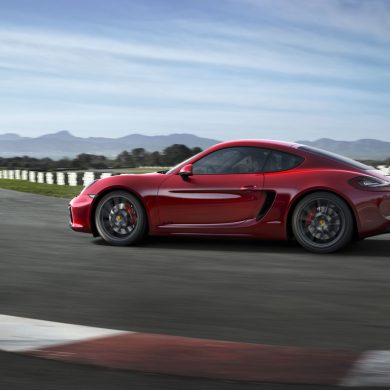
Porsche Cayman GTS (2014 – 2016)
Years: 2015 - 2016
Engine: 3.4 L Nat Asp Flat-6
Power: 330 bhp @ 6700 rpm
Torque: 272 ft lbs @ 4500 rpm
0-60 mph: 4.1 seconds
Top Speed: 175 mph
The Cayman GTS arrived a s 2014 model year car and boy was it special. It featured a marginally more powerful engine, a new body kit, new 20-inch Carrera S wheels, new Bi-Xenon headlights, and a new sports exhaust system. The Cayman GTS is longer than the Cayman and the Cayman S by 30.5 mm (1.2 in) due to its bumpers. The new, optional passive sport suspension allows the Cayman GTS to have a 20 mm lower ride height compared to the Cayman equipped with standard passive suspension or 10 mm lower compared to one with the standard-equipped PASM. Power was 330 bhp @ 6700 rpm and 0 - 60 mph was a brisk 4.1 seconds.
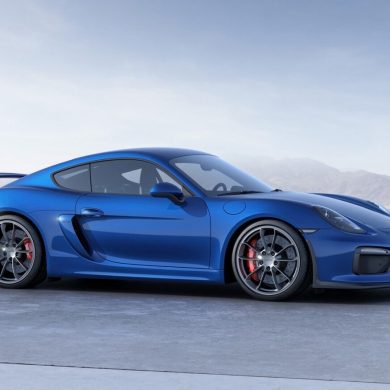
Porsche Cayman GT4 (2015 – 2016)
Years: 2015 - 2016
Engine: 3.8 L Nat Asp Flat-6
Power: 380 bhp @ 7400 rpm
Torque: 310 ft lbs @ 4750 rpm
0-60 mph: 4.0 seconds
Top Speed: 183 mph
In 2015, Porsche announced the car we all thought Porsche would never build. It has been a few years since it has been released and the excitement It was the first time Porsche introduced lets the motorsports guys in Weissach sprinkle their magic on a Cayman. With components sourced from the 911 GT3, an engine carried over from a Carrera S and a tweaked and tuned chassis, brakes and aerodynamics, Porsche’s engineers did their best to produce the perfect mid-engine sports car for road and track use. Compared with the standard Cayman, the GT4’s chassis was lowered by 30mm and bigger brakes were added, with many aspects of its suspension carried over from the 911 GT3. Some serious motorsport kit. One of the best ever.
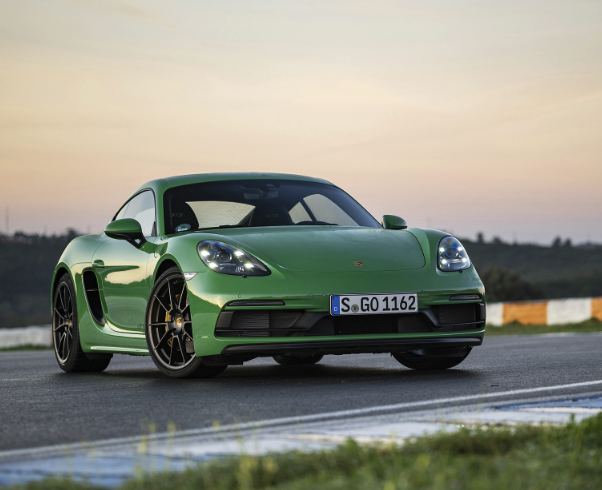
982 Generation Cayman Specs
Type: 982
Generation: Third Generation
Manufacturer: Porsche AG
Production Years: 2016 - Present
Model Years: 2017 - Present
Body Style: 2-Door Coupe
Layout: Rear mid-engine, rear-wheel-drive layout
Engines: 2.0 L MA2.2 turbo flat-4, 2.5 L MA2.22 turbo flat-4, 4.0 L MDG naturally aspirated flat-6
Transmission: 6-speed manual, 7-speed PDK
Official photos: 2016 Apr 24
Premiere: 2016 April 25 at Auto China
Market launch: 2016 September
Porsche 718 Cayman (982) (2017 - Present)
The Porsche Cayman (982), introduced in 2016 is know as the 718 series, a homage to the legendary Porsche race cars of the late 1950s and early 1960s. It had significant changes to the engine lineup and design philosophy. This model replaced the naturally aspirated flat-six engines of previous generations with turbocharged four-cylinder units.
Sparking both enthusiasm and controversy among Porsche purists, the move to turbocharged four-cylinder engines was a monumental move for Porsche. Nevertheless, the 982 Cayman maintained its position as a benchmark for balance, agility, and driving pleasure, embodying the essence of Porsche’s sports car legacy.
The 982 series introduced sharper lines, a more aggressive stance, and updated technology, combining classic Porsche aesthetics with modern engineering. While the change to four-cylinder engines was divisive, the Cayman 982 continues to deliver an exhilarating driving experience. Whether tackling winding mountain roads or cruising on the highway, it remains one of the most accessible ways to enjoy Porsche’s engineering excellence.
When Porsche unveiled the 982 Cayman, it was clear that they aimed to modernize the car while staying true to its roots. The Cayman received a more refined design, reflecting the brand's commitment to aerodynamics and visual appeal. The front fascia was redesigned with larger air intakes, enhancing both cooling and the car’s aggressive demeanor. The headlights featured Porsche’s distinctive four-point LED daytime running lights, giving the Cayman a sharp, contemporary look. The rear end was equally striking, with a sleeker bumper and a continuous light strip that accentuated the car’s width.
Inside, the Cayman 982 offered a driver-centric environment that emphasized simplicity, precision, and quality. The cabin featured Porsche’s PCM (Porsche Communication Management) system with a 7-inch touchscreen, providing access to navigation, audio controls, and Apple CarPlay integration. The optional Sport Chrono Package added a mode selector on the steering wheel, allowing drivers to switch between Normal, Sport, Sport Plus, and Individual driving modes. High-quality materials, such as leather upholstery and aluminum trim, underscored the car’s premium feel, while the layout ensured that all controls were intuitively placed for maximum convenience.
Ergonomically, the Cayman 982 was designed to offer optimal comfort and engagement. The GT Sport steering wheel, inspired by the 918 Spyder, was available as an option, adding a further layer of performance-oriented style. Every element within the cabin, from the seating position to the instrument layout, was meticulously crafted to enhance the driving experience.
The most controversial aspect of the 982-generation Cayman was its switch from naturally aspirated six-cylinder engines to turbocharged four-cylinder units. This change was driven by the need to meet stricter emissions regulations while maintaining performance. The base 718 Cayman came with a 2.0-liter turbocharged flat-four engine producing 300 horsepower and 280 lb-ft of torque. It could accelerate from 0 to 60 mph in 4.9 seconds, or 4.7 seconds with the optional PDK (Porsche Doppelkupplung) dual-clutch transmission. The top speed was an impressive 170 mph.
For those seeking more power, the 718 Cayman S featured a 2.5-liter turbocharged flat-four engine with a variable-geometry turbocharger. This engine delivered 350 horsepower and 309 lb-ft of torque, propelling the car from 0 to 60 mph in 4.4 seconds (4.2 seconds with the PDK). The top speed increased to 177 mph, making the Cayman S a formidable sports car with a broad powerband and excellent mid-range punch.
In 2018, Porsche introduced the 718 Cayman GTS, which also used the 2.5-liter engine but tuned it to produce 365 horsepower and 317 lb-ft of torque. This model could sprint from 0 to 60 mph in 4.1 seconds with the manual transmission or 3.9 seconds with the PDK, offering an exhilarating driving experience that bridged the gap between the S and the track-focused variants.
For purists who longed for the classic Porsche sound and feel, the introduction of the 718 Cayman GTS 4.0 in 2020 was a game-changer. Powered by a naturally aspirated 4.0-liter flat-six engine, this model produced 394 horsepower and 309 lb-ft of torque. The 0-60 mph time dropped to 4.3 seconds, and the car could reach a top speed of 182 mph. This engine, shared with the 718 Cayman GT4, delivered a linear power delivery and an intoxicating exhaust note that many felt restored the Cayman’s heritage.
The pinnacle of the 982 lineup is the 718 Cayman GT4, which features the same 4.0-liter flat-six but tuned to produce 414 horsepower. This track-focused variant boasts a 0-60 mph time of 4.2 seconds and a top speed of 188 mph. The GT4's chassis, aerodynamics, and suspension were all optimized for high-performance driving, making it a favorite among enthusiasts who frequent the racetrack.
The 982 Cayman’s mid-engine layout continues to be one of its greatest strengths. This configuration provides near-perfect weight distribution, resulting in exceptional balance and agility. Porsche’s engineering expertise is evident in the car’s PASM (Porsche Active Suspension Management) system, which electronically adjusts the damping based on road conditions and driving mode. This allows the Cayman to deliver a compliant ride during daily driving while maintaining razor-sharp handling when pushed to its limits.
The optional Porsche Torque Vectoring (PTV) system further enhances cornering by applying brake pressure to the inside rear wheel, helping the car rotate more effectively. The Sport Chrono Package adds dynamic transmission mounts, which minimize engine movement during spirited driving, ensuring that the car remains stable and responsive. Whether on tight, twisty roads or wide-open highways, the Cayman 982 feels planted, predictable, and incredibly communicative.
Drivers can choose between a six-speed manual gearbox and the seven-speed PDK dual-clutch transmission. The manual offers a more engaging experience, with precise shifts and a rewarding mechanical feel. The PDK, on the other hand, delivers lightning-fast gear changes, making it ideal for those who prioritize speed and convenience.
The Porsche Cayman 982 is generally reliable, but prospective buyers should be aware of a few potential issues. Turbo lag can be noticeable in the 2.0-liter and 2.5-liter models, especially at lower RPMs. Additionally, the direct-injection engines can suffer from carbon buildup on the intake valves over time, which may affect performance. Regular maintenance, such as oil changes and periodic carbon cleaning, can help mitigate these concerns.
Brake components, particularly on high-performance variants like the GTS and GT4, can wear out quickly with aggressive driving. It’s essential to inspect the brake discs and pads during a pre-purchase inspection. Routine maintenance costs are reasonable for a sports car of this caliber, with oil changes costing between $200 and $300 and major services around $1,500.
Depreciation has been a factor for the early 982 Caymans, particularly the base and S models, due to the mixed reception of the turbocharged engines. However, models like the GTS 4.0 and GT4 have held their value remarkably well, thanks to their naturally aspirated engines and enthusiast appeal.
The Porsche Cayman (982) offers a compelling mix of modern performance, timeless design, and exceptional driving dynamics. Despite the controversy surrounding the switch to turbocharged four-cylinder engines, the 982 Cayman remains a true driver’s car, with the 718 Cayman GTS 4.0 and GT4 reaffirming Porsche’s commitment to its purist roots. Whether you’re a daily driver, weekend warrior, or track day enthusiast, the Cayman 982 provides a level of balance and engagement that few other sports cars can match. For those seeking a mid-engine sports car that delivers Porsche’s legendary engineering in a versatile package, the 982 Cayman stands as a definitive choice.
The 718 Cayman GTS 4.0 is a masterpiece. It's a pure driver's car that delivers a level of engagement and feedback that's rare in today's world of turbocharged and hybridized performance cars. It's a car that makes you feel alive.
Top Gear
Porsche 718 Cayman (982) Variants
The 718 featured two new horizontally-opposed flat-4 turbocharged engines at 2.0-litre (Boxster/Cayman) and 2.5-litre (Boxster S/Cayman S) displacement with increased torque and horsepower with lower fuel consumption. In October 2017, the GTS models were announced with their 2.5-litre engines rated at 360 hp. Since 2020, the GTS 4.0 model has been offered for both 718 models. The new model features the 4.0-litre flat-6 from the Cayman GT4 and Boxster Spyder, however de-tuned to 394 hp. Like with its predecessor, the Cayman also gets a motorsport version. The 718 Cayman GT4 RS is the pinnacle of the range and is one special variant.
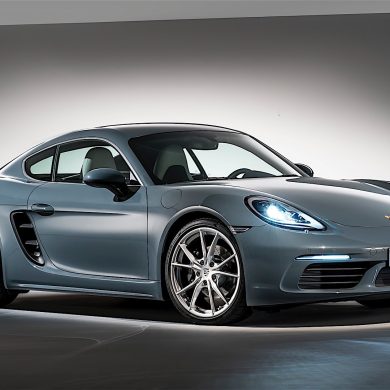
Porsche 718 Cayman (2017 – Present)
Years: 2017 - Present
Engine: 2.0 L Turbo Flat-4
Power: 296 bhp @ 6500 rpm
Torque: 280 ft lbs @ 1950 rpm
0-60 mph: 4.5 seconds
Top Speed: 171 mph
With the 982-generation Boxster/Cayman platform, Porsche went back in time to pull out the 718 name, a reminder that the sports car maker has been doing the small sports car thing for a long time. The 718 of course, is diminutive race car that won the Targa Florio race in 1959 and 1960. The marketing stunt was meant to evoke these past Porsche racing successes with light cars like the 718 that outmaneuvered competitors with larger and more powerful engines. The reason? Porsche got rid of the flat-6 engines and instead would now have flat-4 turbo engines.
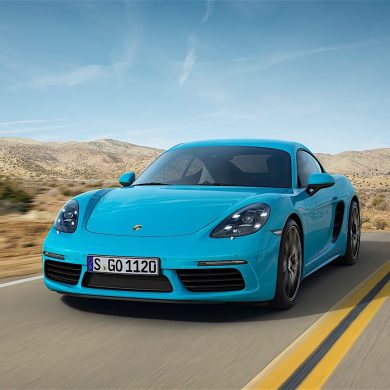
Porsche 718 Cayman S (2017 – Present)
Years: 2017 - Present
Engine: 2.5 L Turbo Flat-4
Power: 345 bhp @ 6500 rpm
Torque: 310 ft lbs @ 1900 rpm
0-60 mph: 4.0 seconds
Top Speed: 177 mph
Searching for more muscle? The 718 Cayman S got a new 2.5L turbocharged boxer 4-cylinder. Power comes in at 345 bhp @ 6500 rpm and torque is a really strong 310 ft lbs @ 1900 rpm. For reference, the outgoing 981 Cayman S had 311 bhp and 265 ft lbs of torque. While we hate the drone of the turbo four cylinder, there is absolutely no doubt that is much more powerful and that performance numbers are much stronger. 0 – 60 mph is over in just 4.0 seconds and the quarter mile is finished in 11.9 seconds flat. Much faster than the outgoing model. But is it as engaging? No.
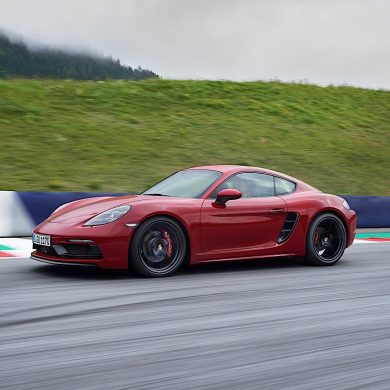
Porsche 718 Cayman GTS (2018 – 2022)
Years: 2018 - 2021
Engine: 2.5 L Turbo Flat-4
Power: 360 bhp @ 6500 rpm
Torque: 310 ft lbs @ 1900 rpm
0-60 mph: 3.9 seconds
Top Speed: 180mph
Porsche expanded its mid-engine range with the new two-seater Porsche 718 Boxster GTS and Porsche 718 Cayman GTS. The vehicles' power has now been increased to 269 kw (365 hp) thanks to a newly developed intake duct and an optimised turbocharger for the 2.5-litre, four-cylinder boxer engine. With these improvements, the engine delivers 11 kW (15 hp) more power than the 718 S model and up to 26 kW (35 hp) more power than its GTS predecessor models with naturally aspirated engines. The new mid-engine sports cars are available with manual six-speed transmission or optional PDK
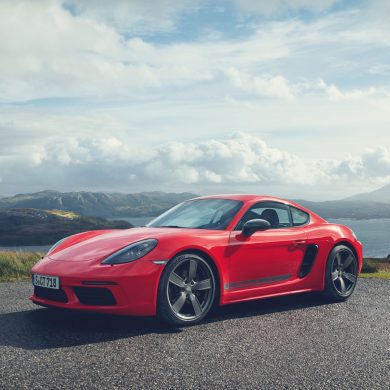
Porsche 718 Cayman T (2020 – Present)
Years: 2019 - 2024
Engine: 2.0 L Turbo Flat 6
Power: 296 bhp @ 6500 rpm
Torque: 280 ft lbs @ 1950 rpm
0-60 mph: 4.5 seconds
Top Speed: 171 mph
Similar to the 911 T, the 718 Cayman T is not the fastest, most luxurious or even the cheapest of all the 718 variants. However, the car is a unique combination of features and nuances that add up to more than the sum of its parts. The T-wins are the perfect car for somebody who knows exactly what they want, and wants nothing more than that - the purist’s car. The Cayman T is equipped with the base-model 718’s mid-mounted 2.0L flat-four turbocharged engine, which produces 296 bhp @ 6500 rpm and 280 ft lbs of torque. The Sport Chrono package is included as standard.
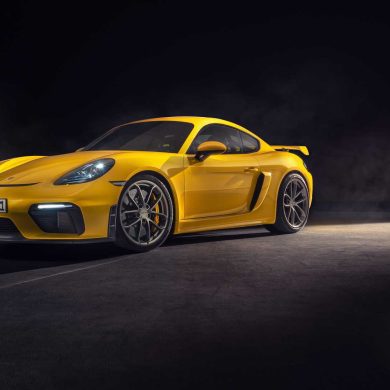
Porsche 718 Cayman GT4 (2020 – Present)
Years: 2020 - Present
Engine: 4.0 L Flat 6
Power: 414 bhp @ 7600 rpm
Torque: 310 ft lbs @ 5000 rpm
0-60 mph: 4.4 seconds
Top Speed: 187 mph
The 718 Porsche Cayman GT4 is everything you could possibly want in a sports car. The sublime combination of a legendary chassis and naturally aspirated 6-cylinder Porsche engine is accentuated by the emphasis that less is more when done right - and nobody does this better than Porsche’s GT division. No one will make the argument that these are objectively inexpensive cars, but for those in the market for an introductory dose of supercar sensory-overload, the GT4 checks all the boxes, and then some. Need a track car and daily driver in one package? Then the 718 Cayman GT4 may be the car for you. An absolute blast.
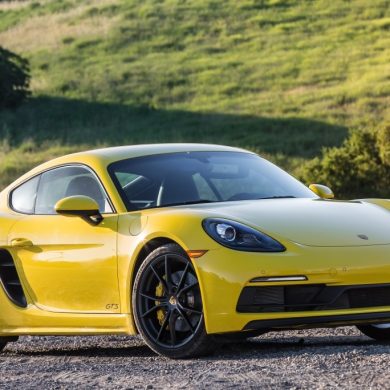
Porsche 718 Cayman GTS 4.0 (2021 – Present)
Years: 2020 - Present
Engine: 4.0 L Flat 6
Power: 395 bhp @ 7800 rpm
Torque: 310 ft lbs @ 5000 rpm
0-60 mph: 4.3 seconds
Top Speed: 182 mph
The 2021 Cayman GTS 4.0 is the perfect car. The old GTS used a 2.5-liter turbocharged flat-4, and while it was a perfectly strong engine with lots of low-end torque, it lacked the personality and linear power delivery of a free-breathing flat-six. It didn't sound half as good, either. The GTS 4.0 was built to offer more performance and more grunt as well as a more aggressive design and all the good options included as standard. The new 4.0-liter engine is borrowed from the 718 Spyder and Cayman GT4, detuned to produce 394 horsepower and 309 pound-feet of torque. A 6-speed manual is standard.
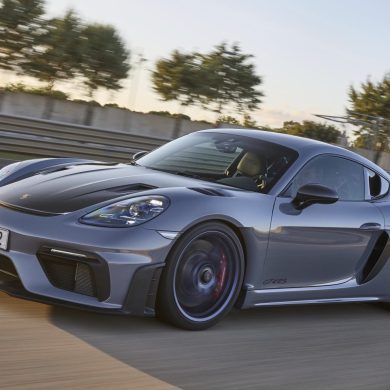
Porsche 718 Cayman GT4 RS (2022 – 2024)
Years: 2022 - 2024
Engine: 4.0 L Flat 6
Power: 493 bhp @ 8,400 rpm
Torque: 331 ft lbs @ 6,750 rpm
0-60 mph: 3.2 seconds
Top Speed: 196 mph
New for 2022 is the most exciting Cayman ever, the 718 Cayman GT4 RS. The GT4 RS is equipped with the same scintillating flat-six engine that powers the 911 GT3. It's a 4.0-liter unit that makes 493 hp and 331 lb-ft of torque in the GT4 RS. Porschephiles will notice that those figures are not quite as high as in the 911 GT3, which packs 502 hp and 346 lb-ft. Big numbers for a small, lightweight car. It is only available with a seven-speed dual-clutch to optimize lap times further. Nobody has driven it yet from the motoring public, but we eagerly await that day and will report back here.
Our Favorite Porsche Cayman Images (All Generations)
...a screaming, snarling, utterly addictive track weapon that's also surprisingly civilized on the road. It's a masterpiece of engineering and a pure distillation of Porsche's motorsport DNA
Top Gear on the 718 Cayman GT4 RS


